A young girl’s orthodontic journey
When front incisors get trapped in a crossbite, it calls for immediate intervention.
(Click to see bigger image)
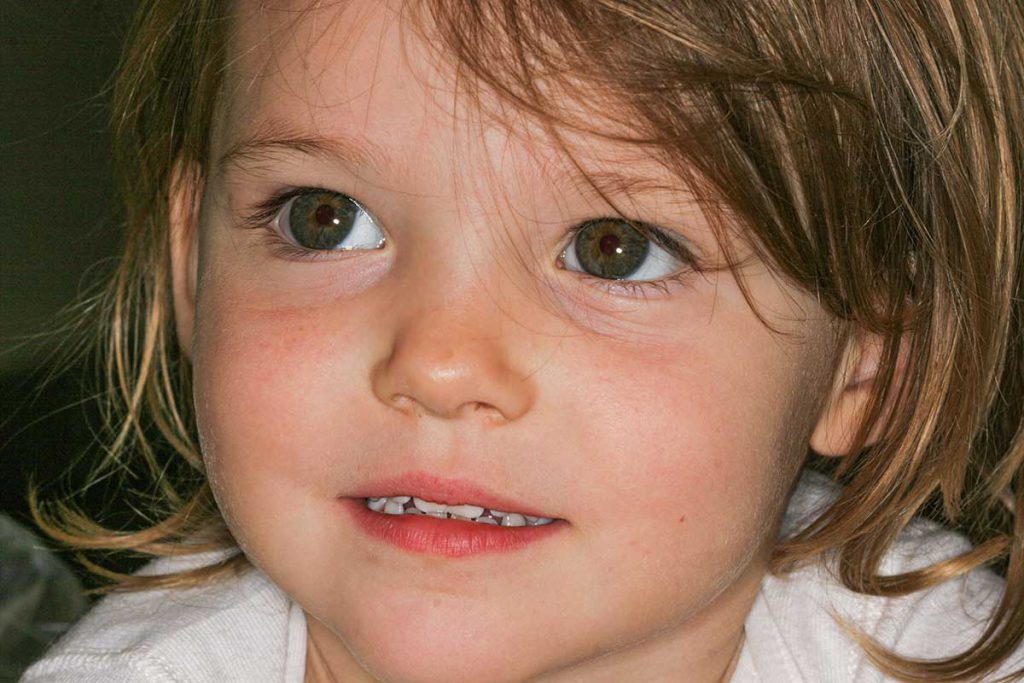
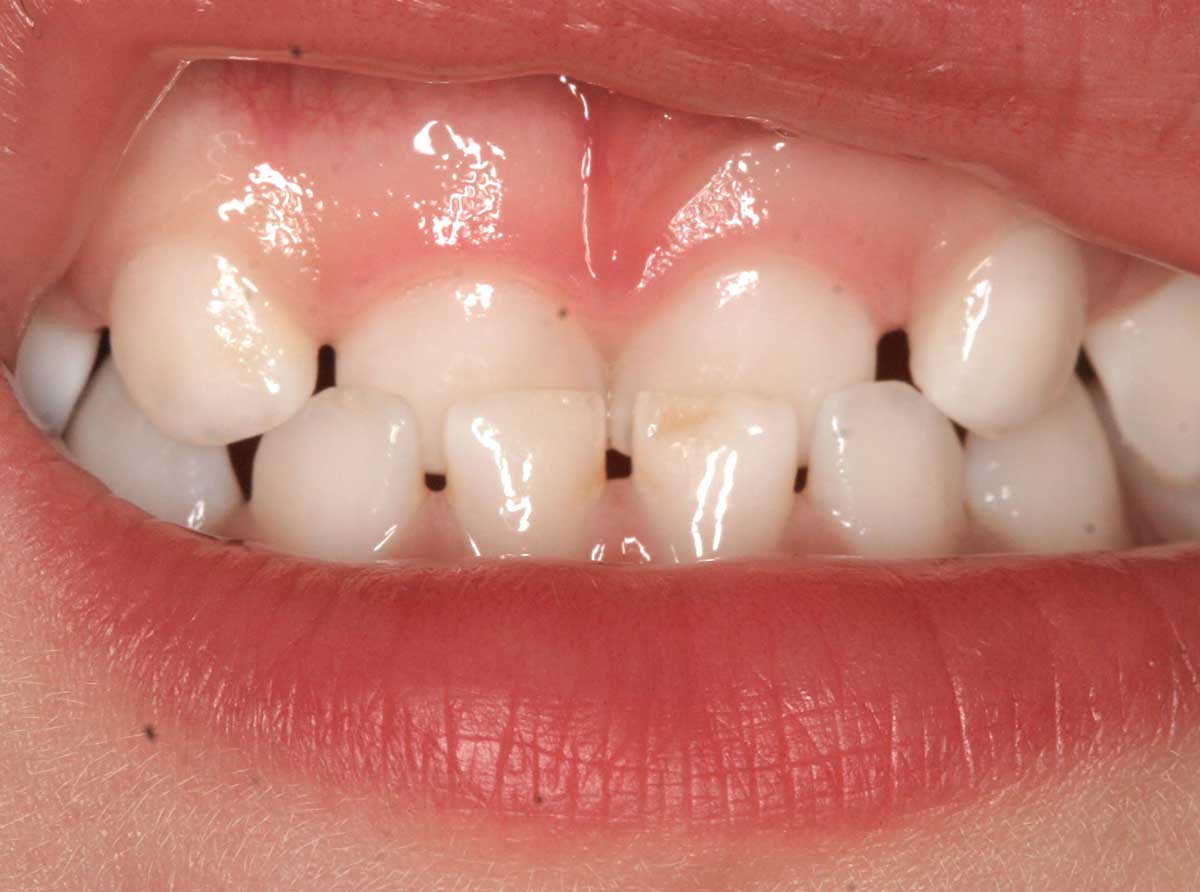
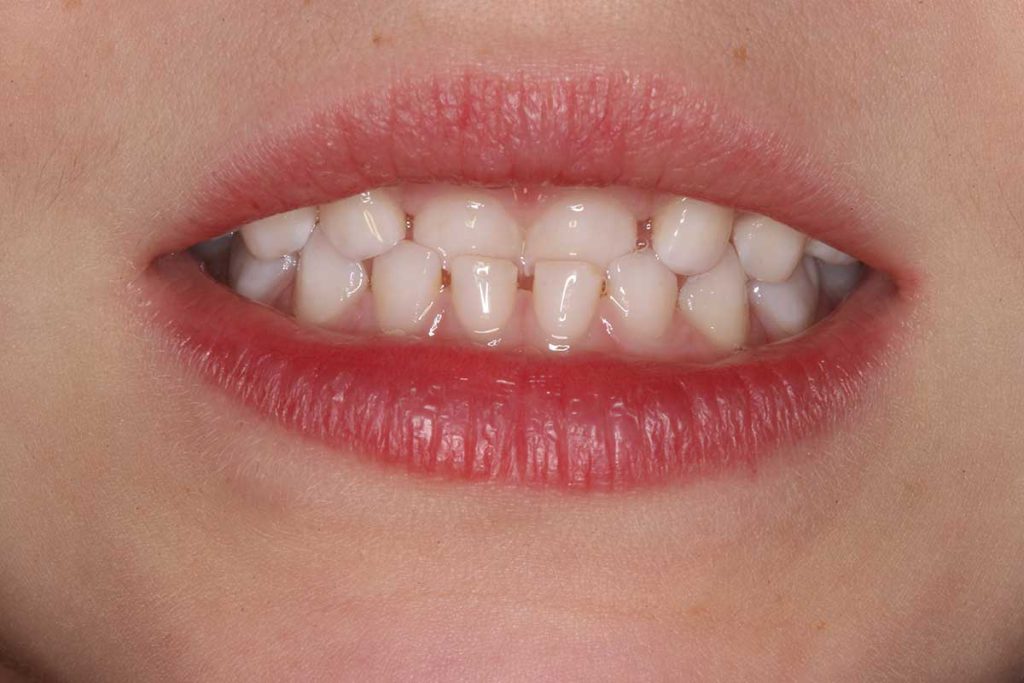
This young girl was presented with this situation very early on in her childhood. The condition did not seem to have an underlying skeletal anomaly, such as an overgrown lower jaw (class III) but rather more of a dental background.
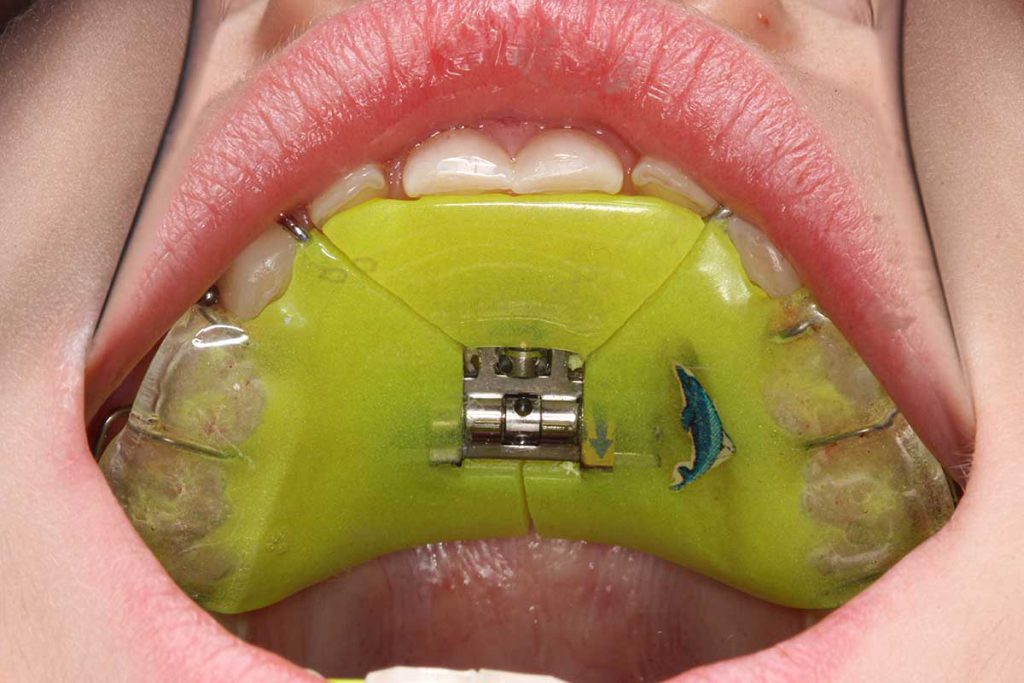
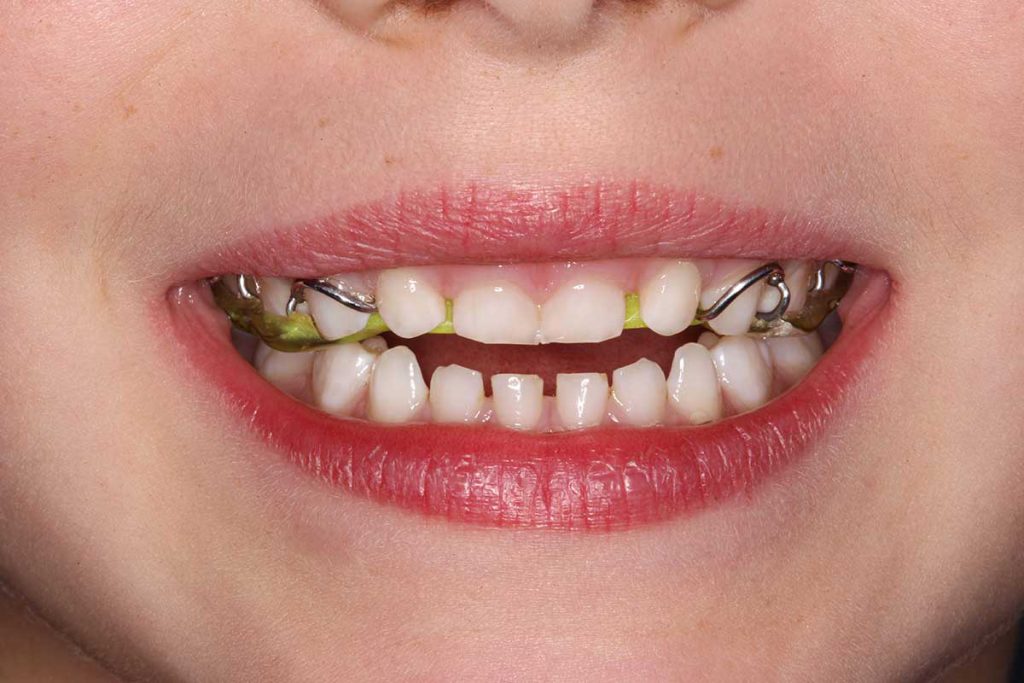
The course of action was to make a 3-way expander for the upper jaw, with an occlusal plane to open up the bite so the involved teeth would have space to slide over each other and “jump” the bite.
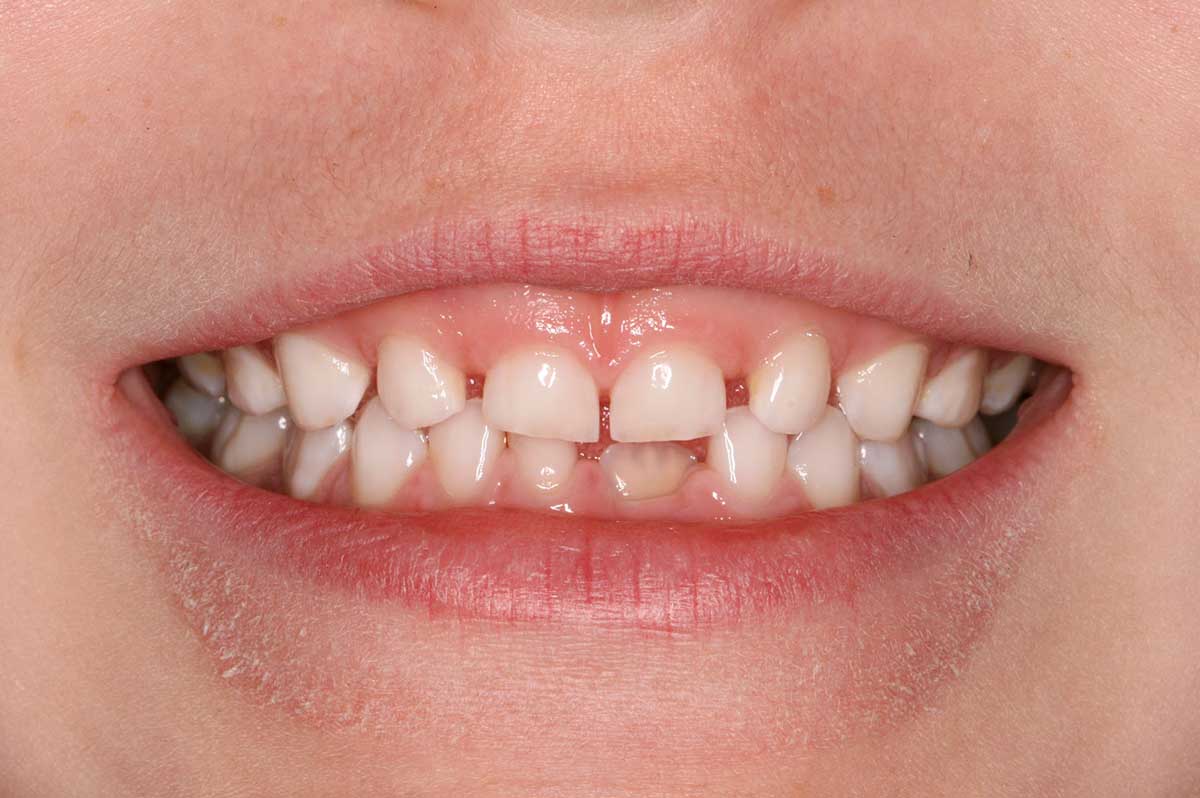
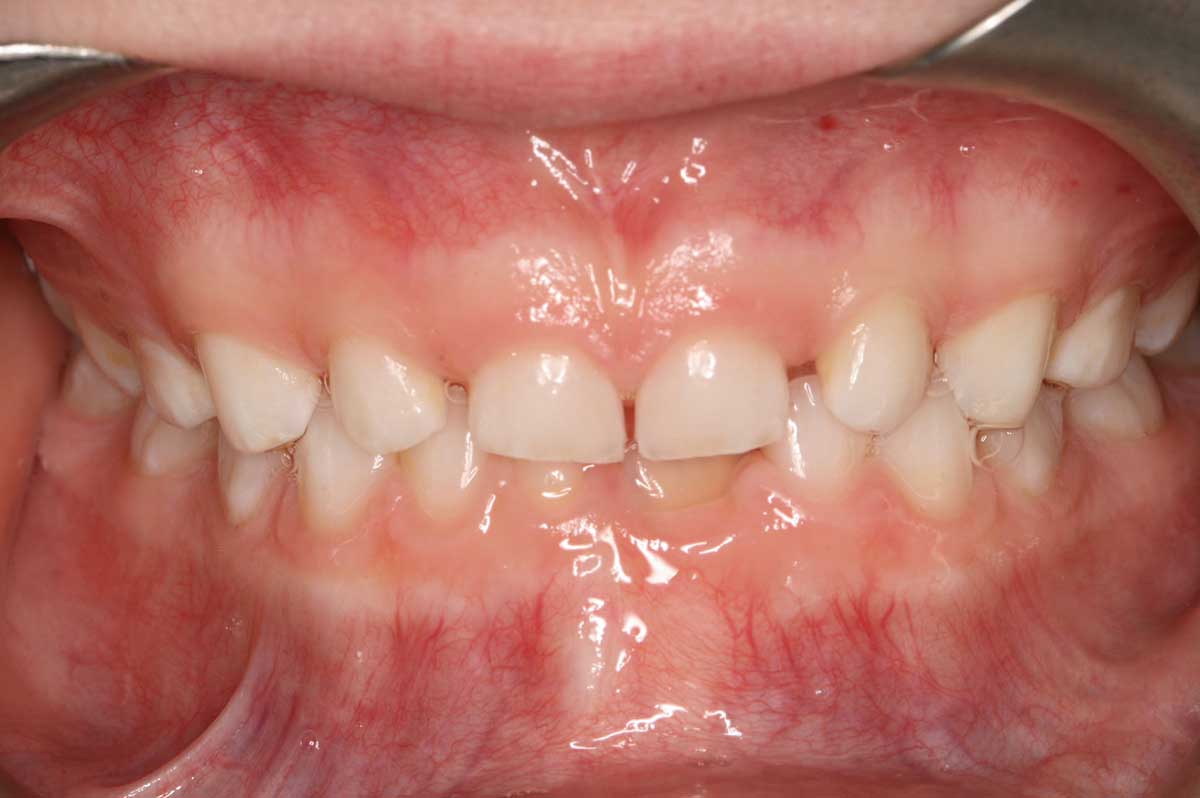
After only a few months, the bite has jumped and the little girl has a normal incisor bite.
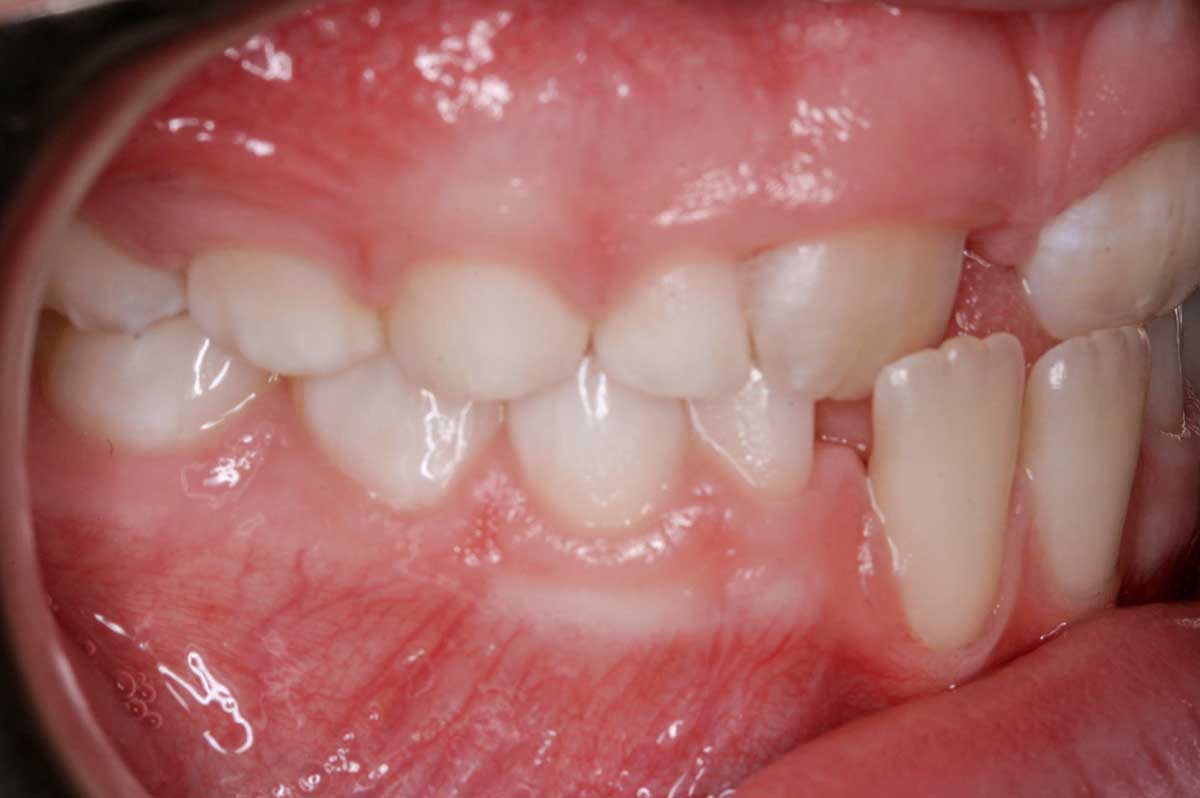
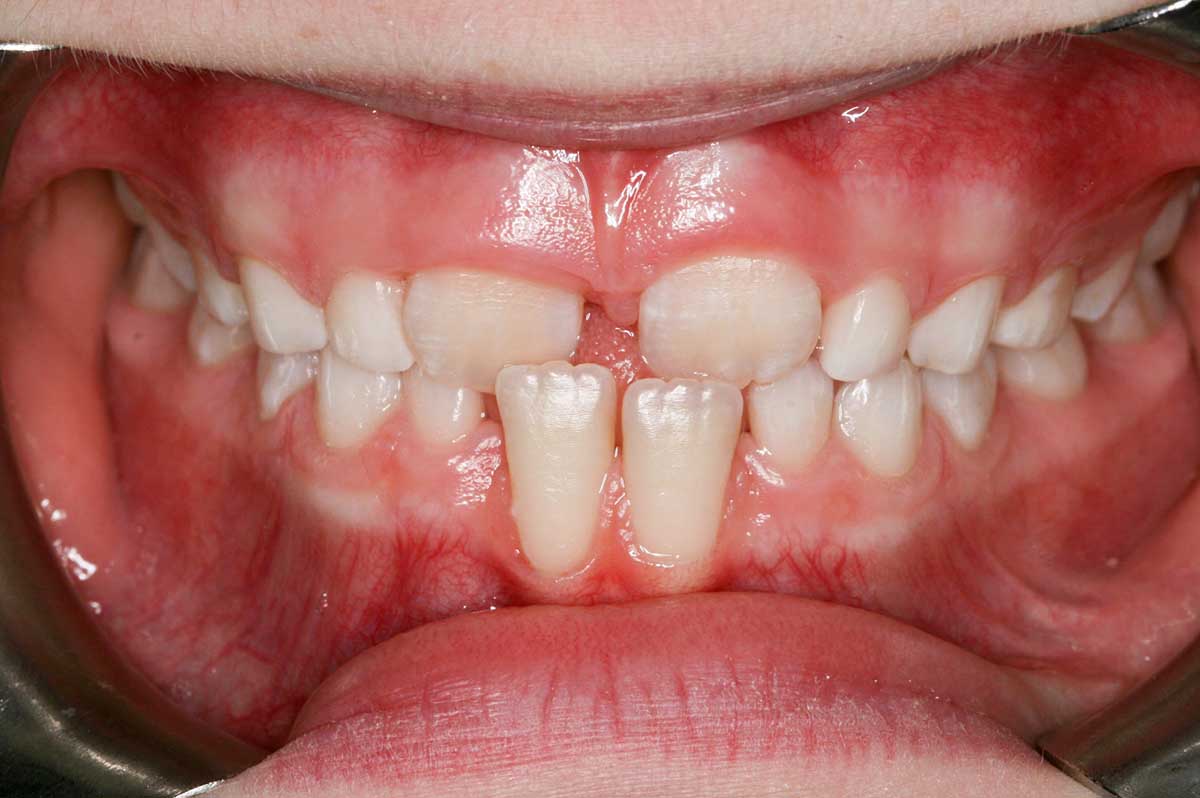
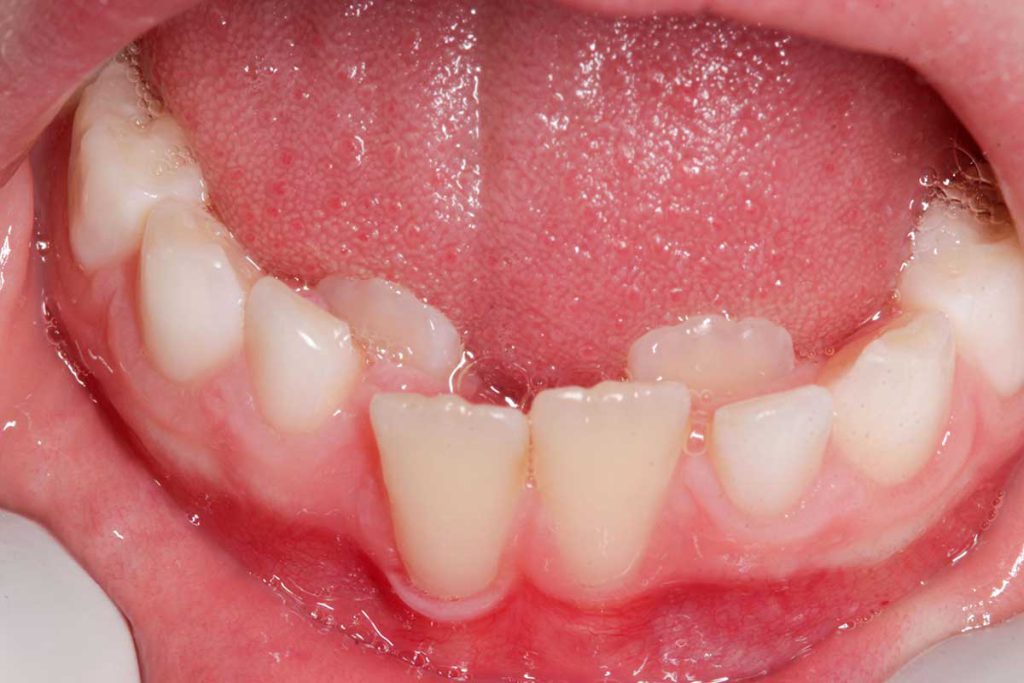
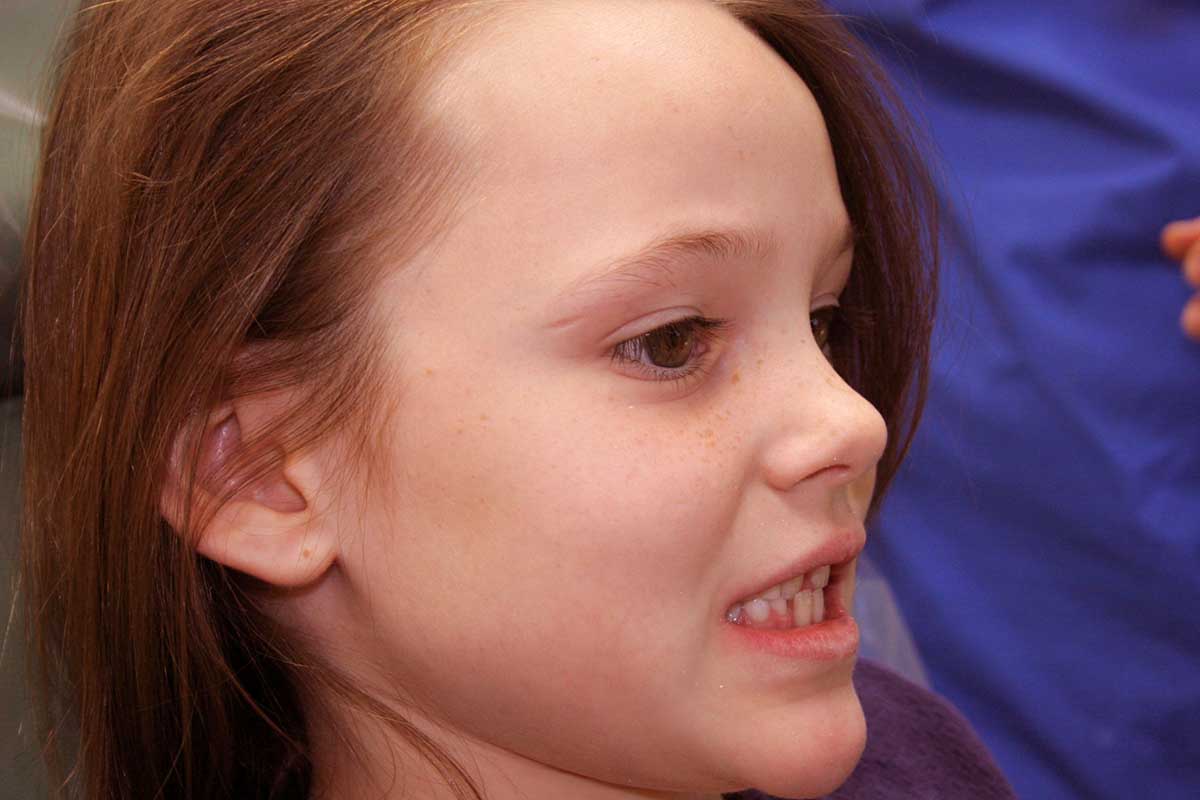
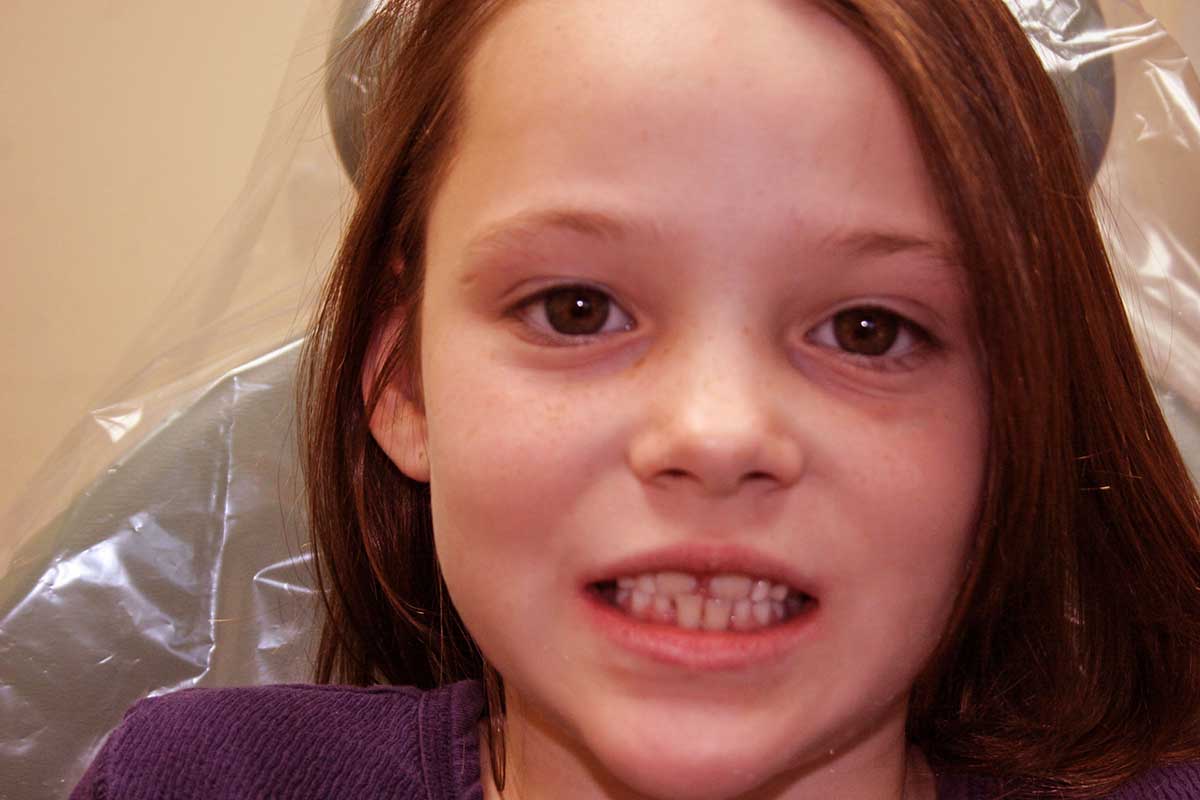
Two years later she comes back with the same situation with the permanent teeth erupting. A slight lingual eruption of the upper incisors locks into a crossbite with the lower incisors. This reverse scenario is so unfavorable that it causes the upper incisors to flare inwards, and pushes the lower incisors even further out, creating a harmful recession as the teeth are locked in reverse and “pushed” out of the bone. If we do not intervene immediately, the situation will only get worse, and contrary to some beliefs, it will NEVER resolve itself.
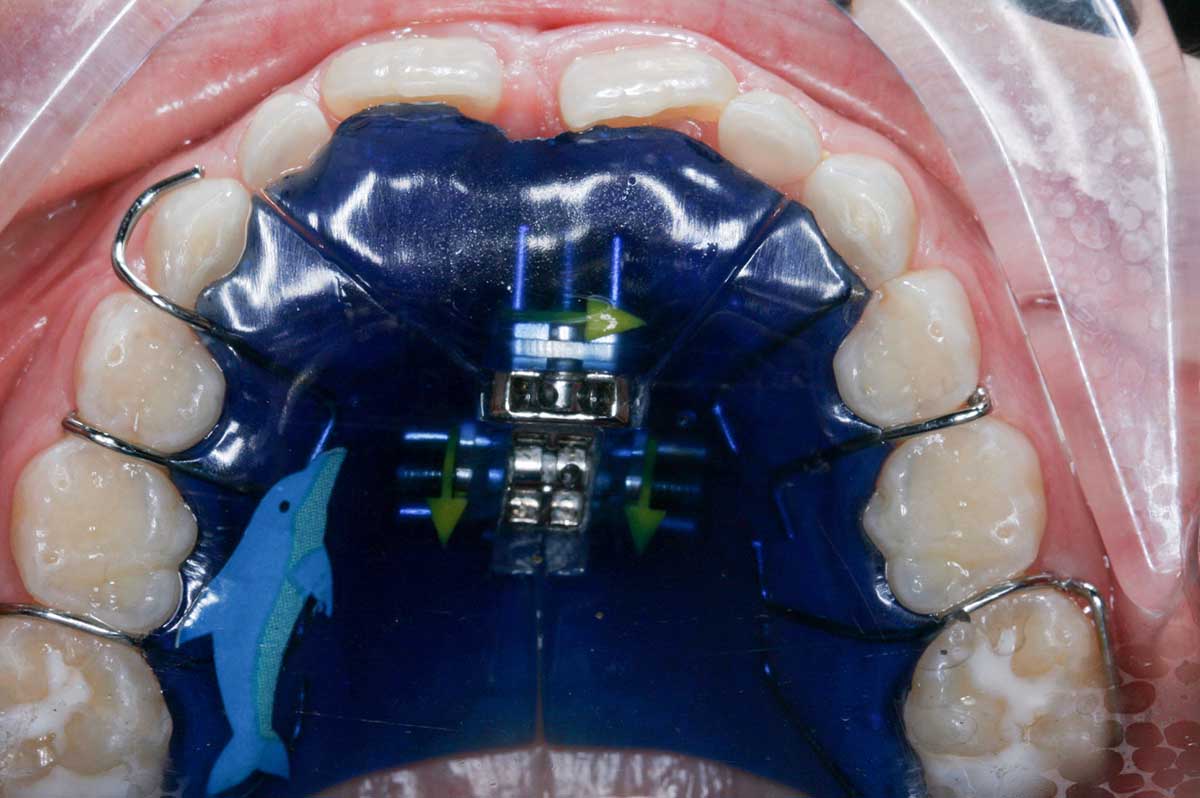
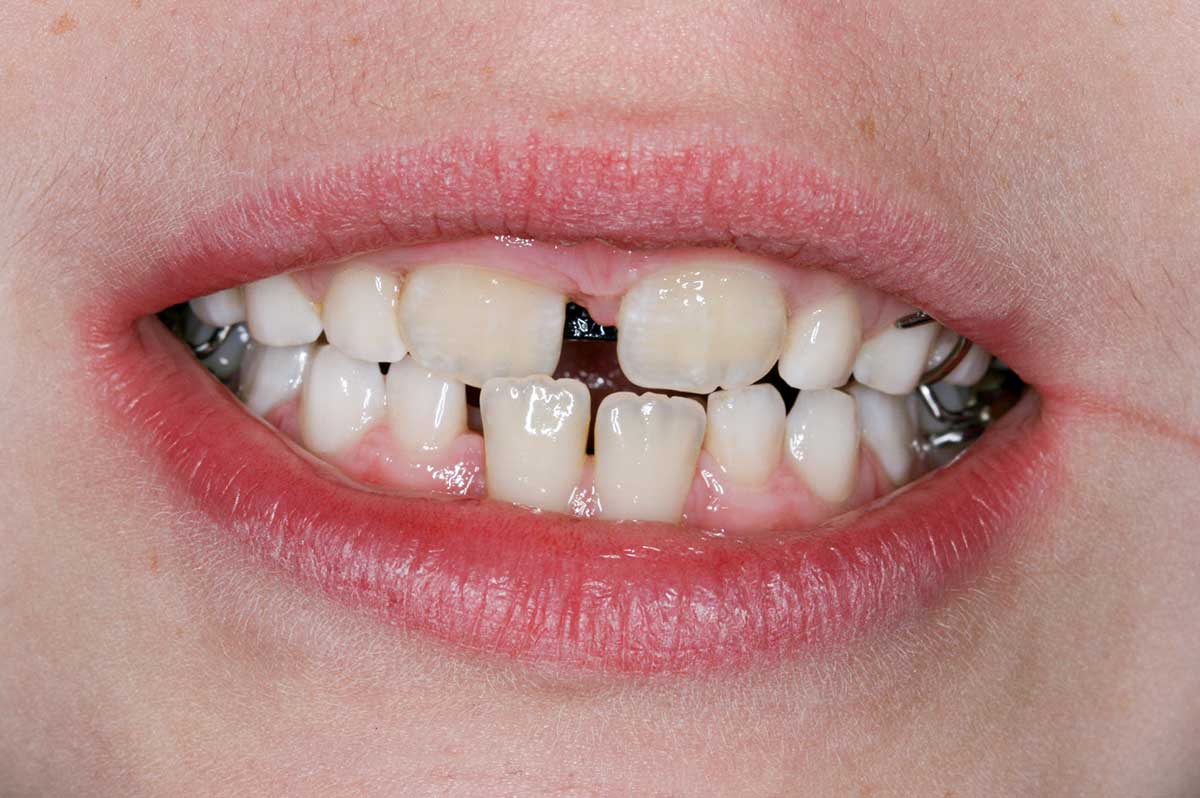
A 3-way expander is fabricated just like the first one, to push the upper teeth along with the premaxilla (the triangle of jawbone right behind the incisors) forward.
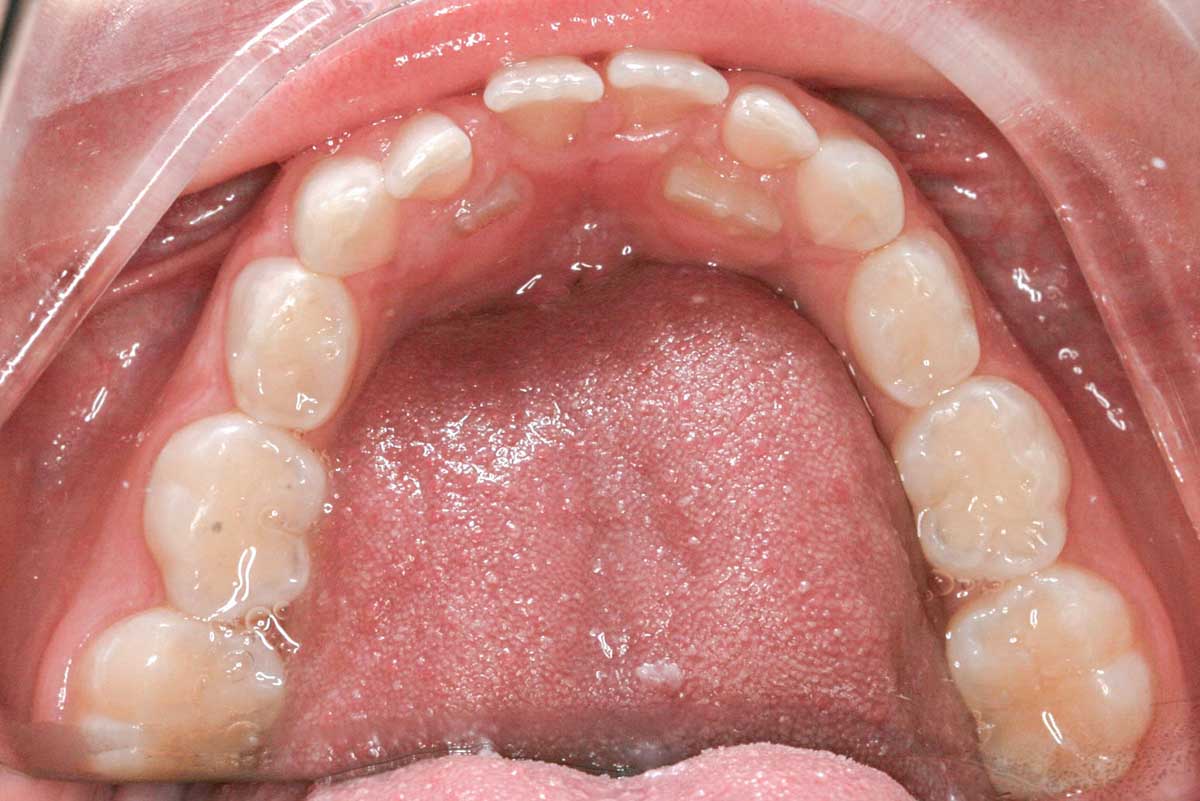
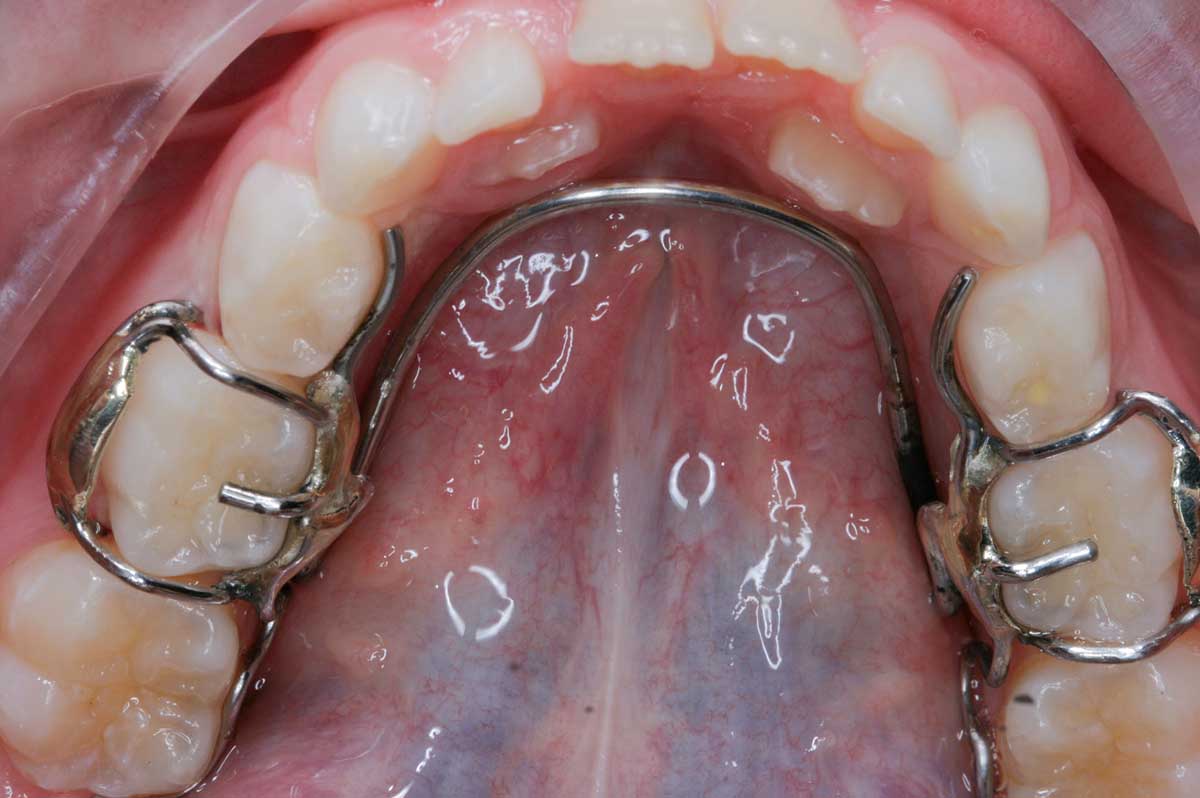
The lower jaw receives a crozat expander, followed by a vertical dimension opening by adding composite on the primary molars.
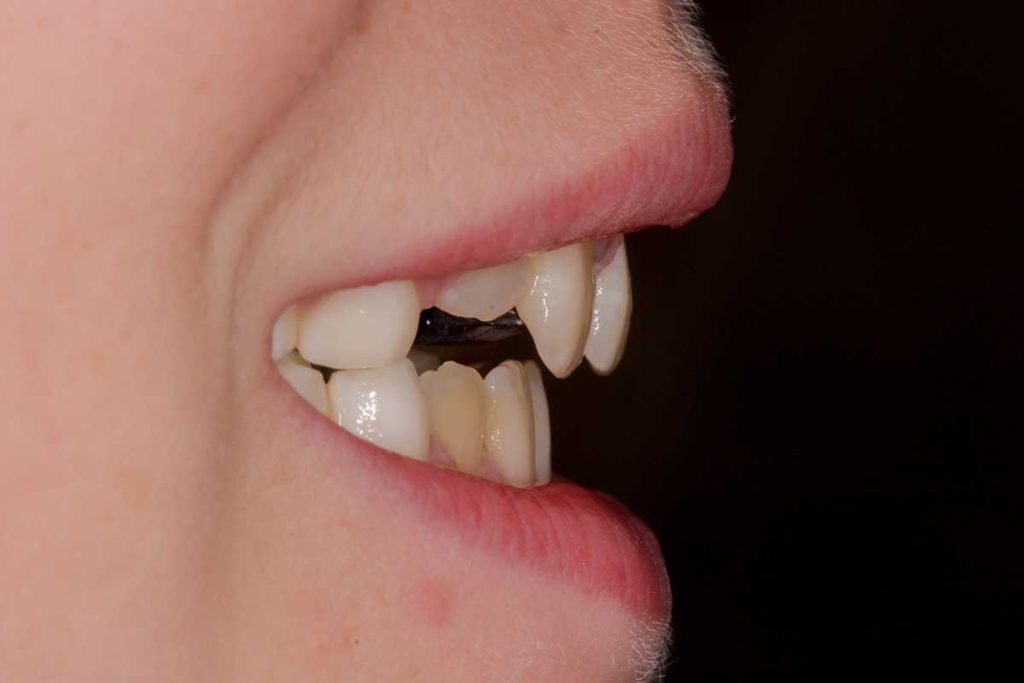
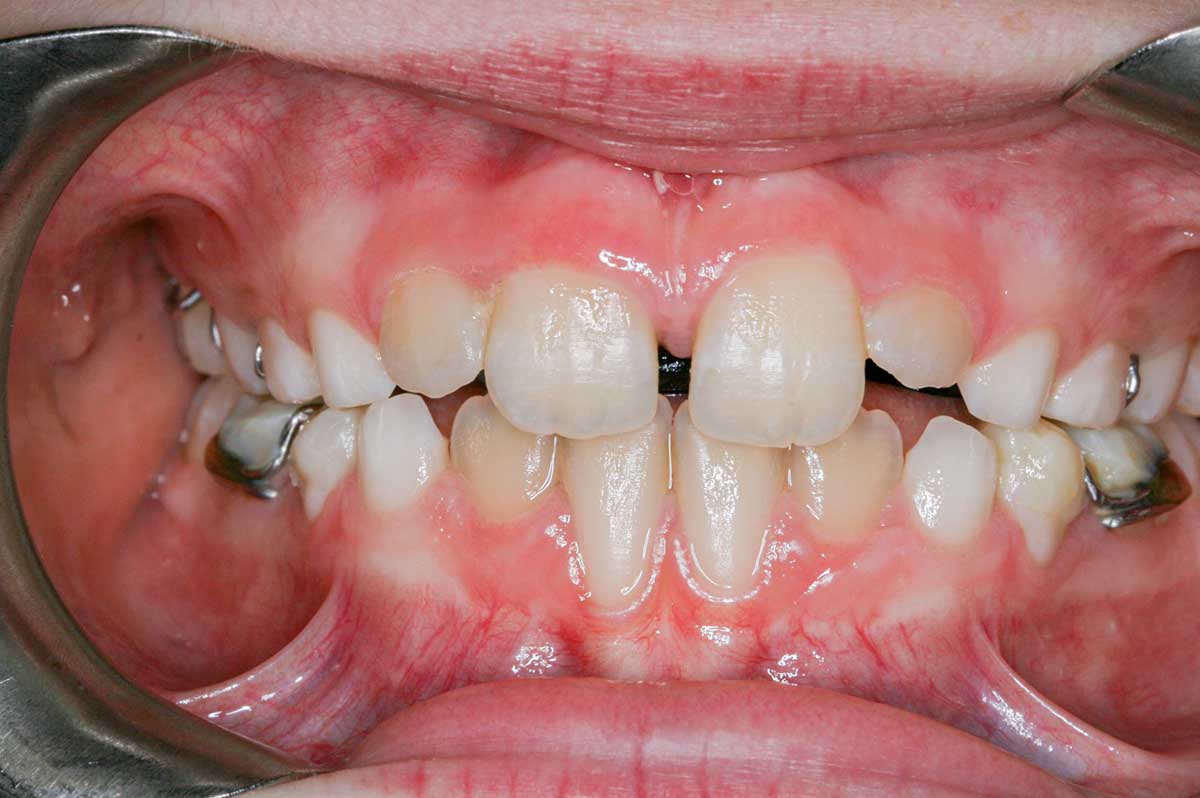
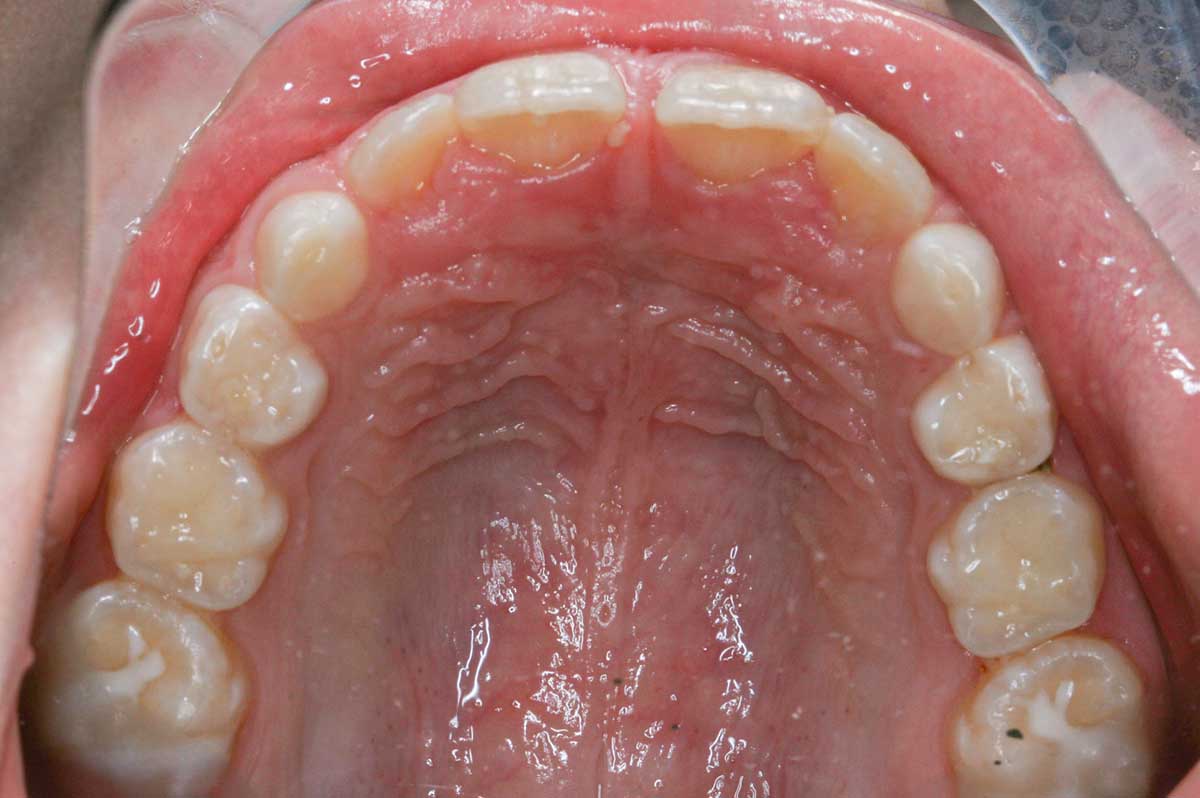
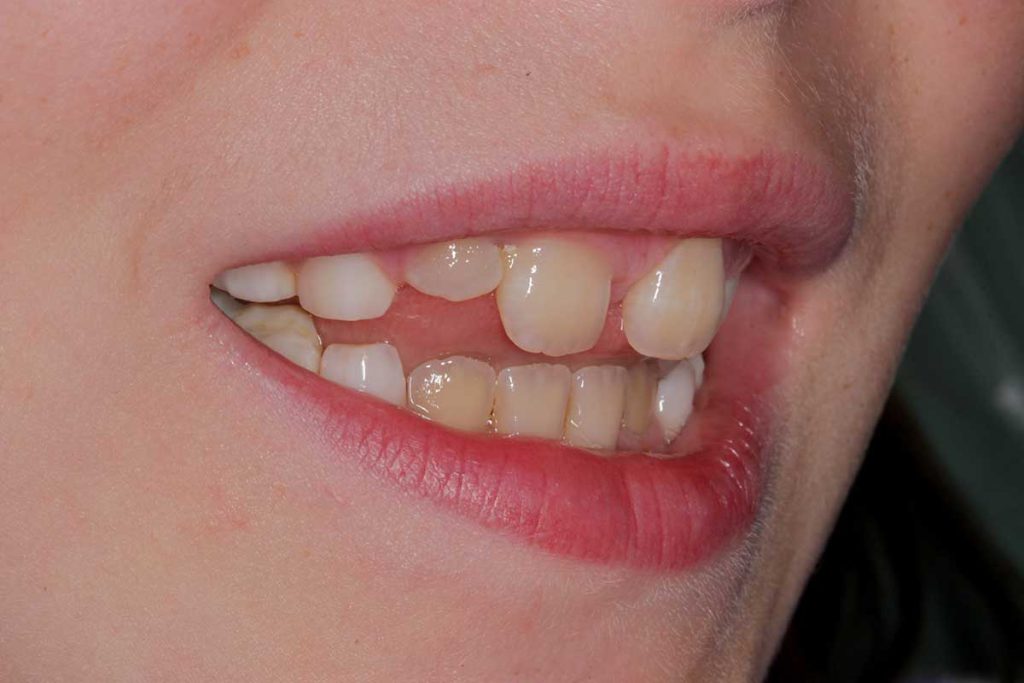
After 6 months of jaw-orthopedic appliance therapy, all upper and lower incisors are aligned and the young girl is out of her crossbite.
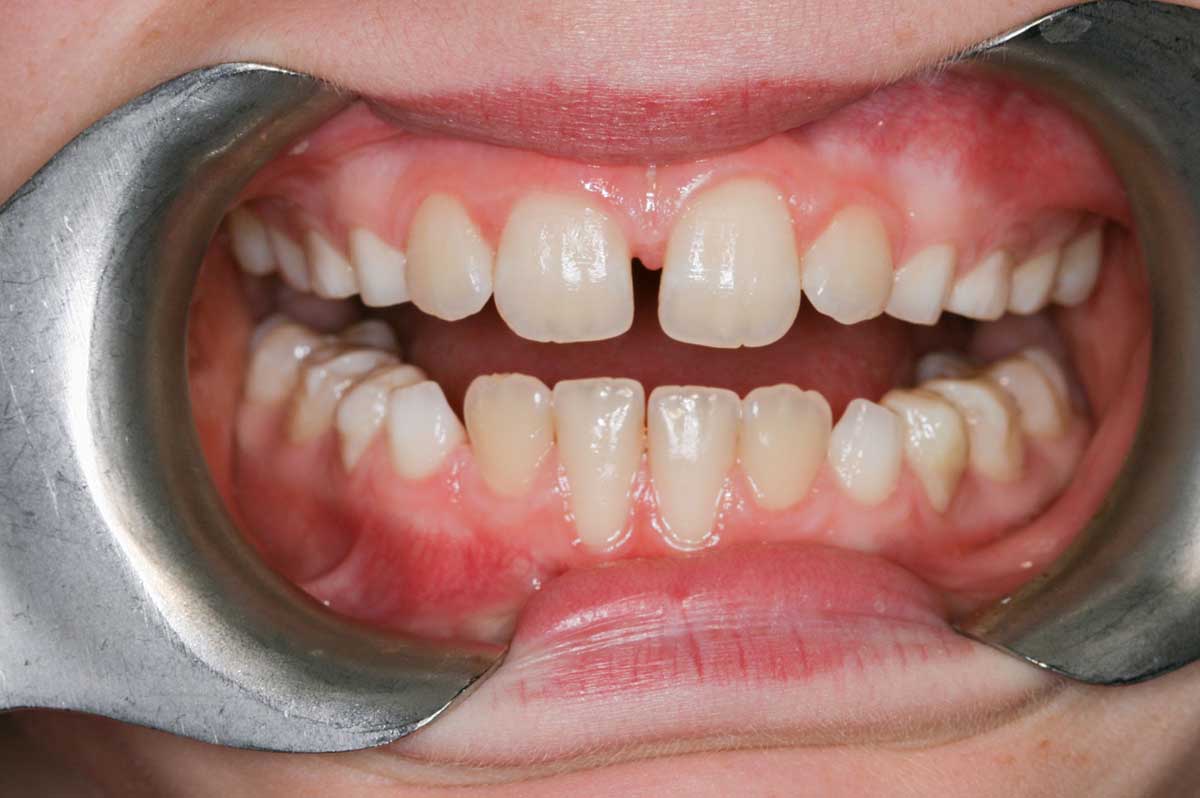
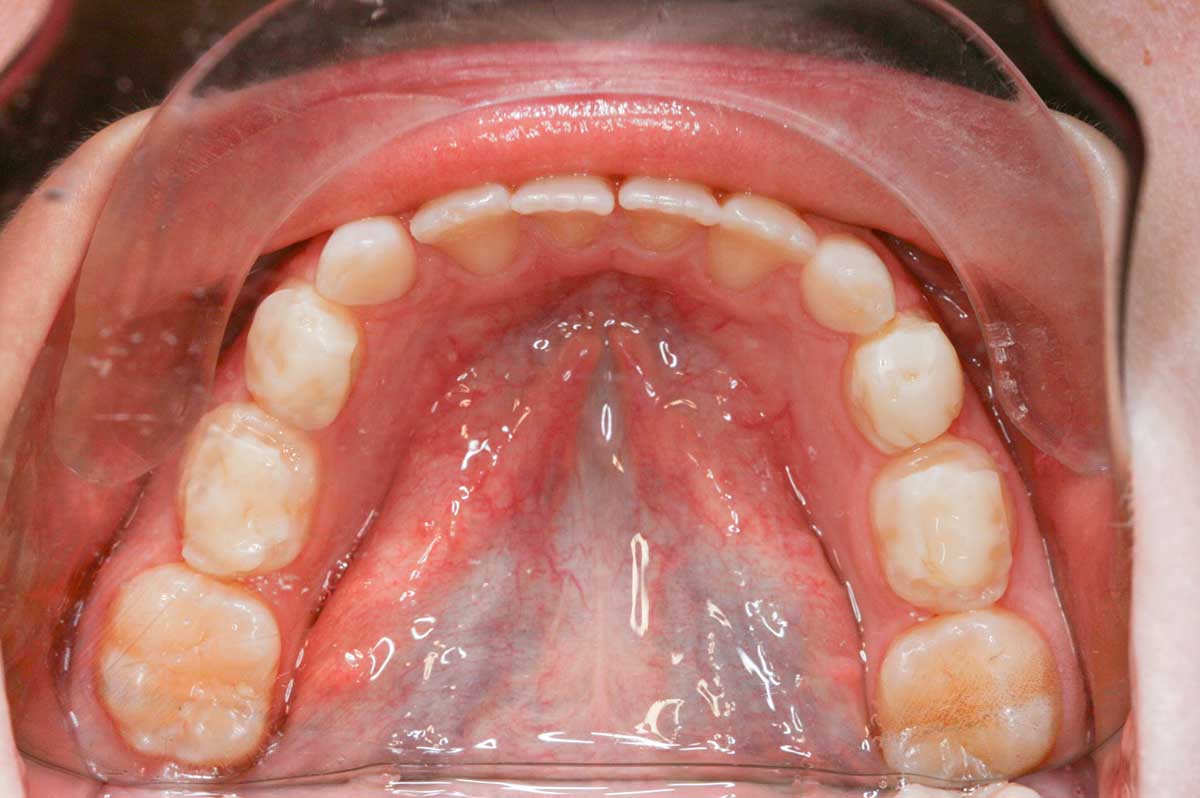
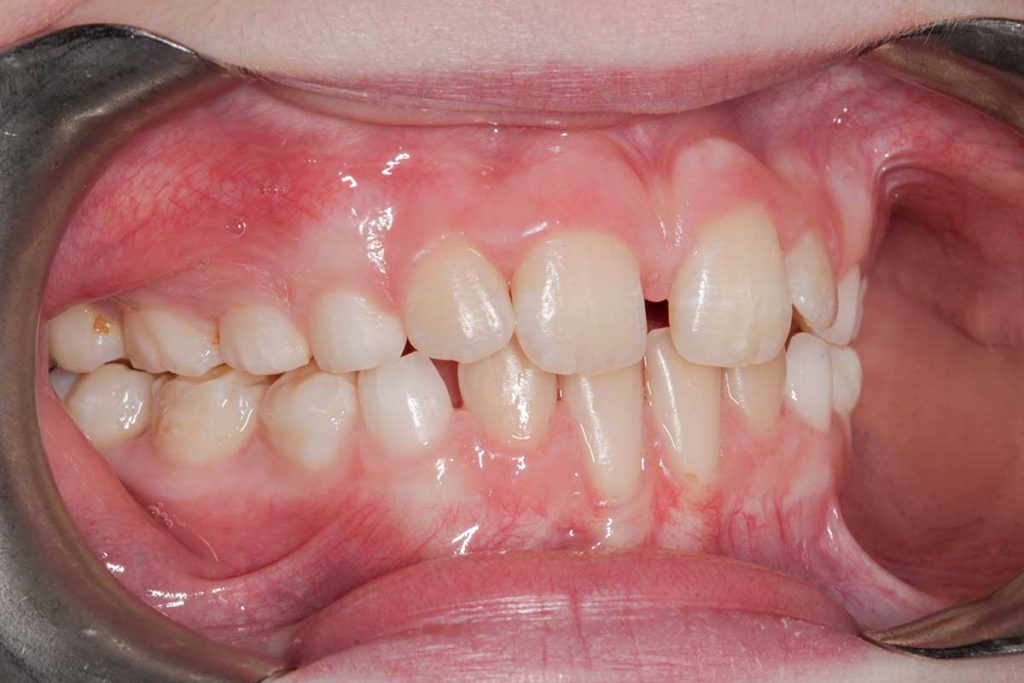
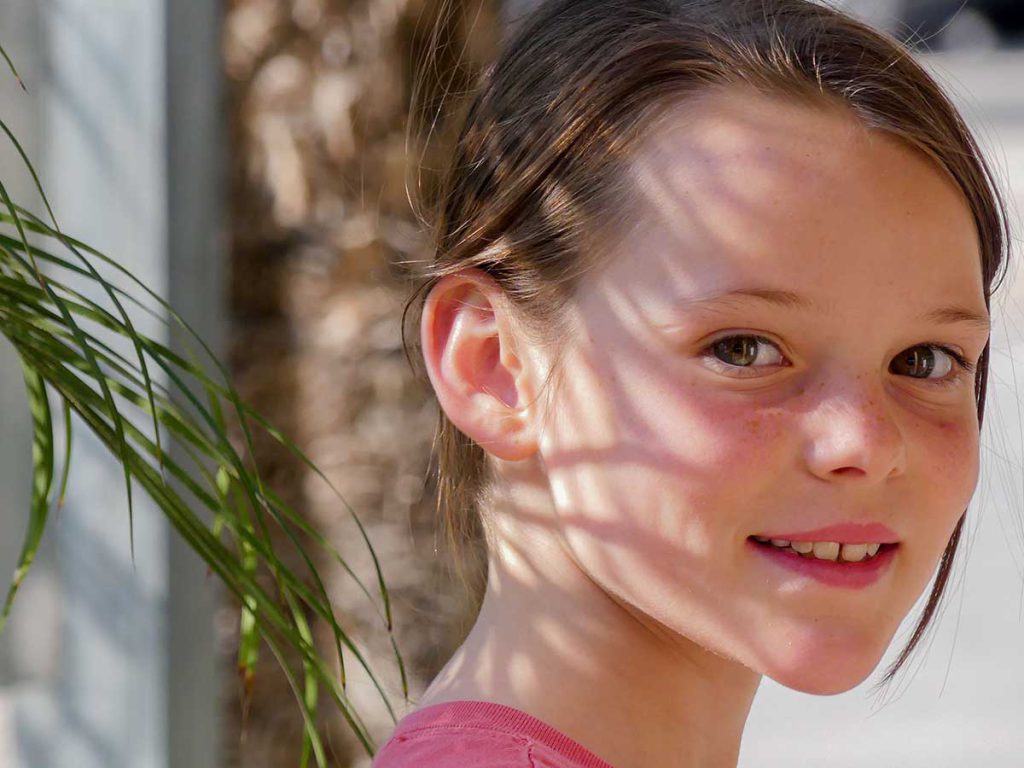
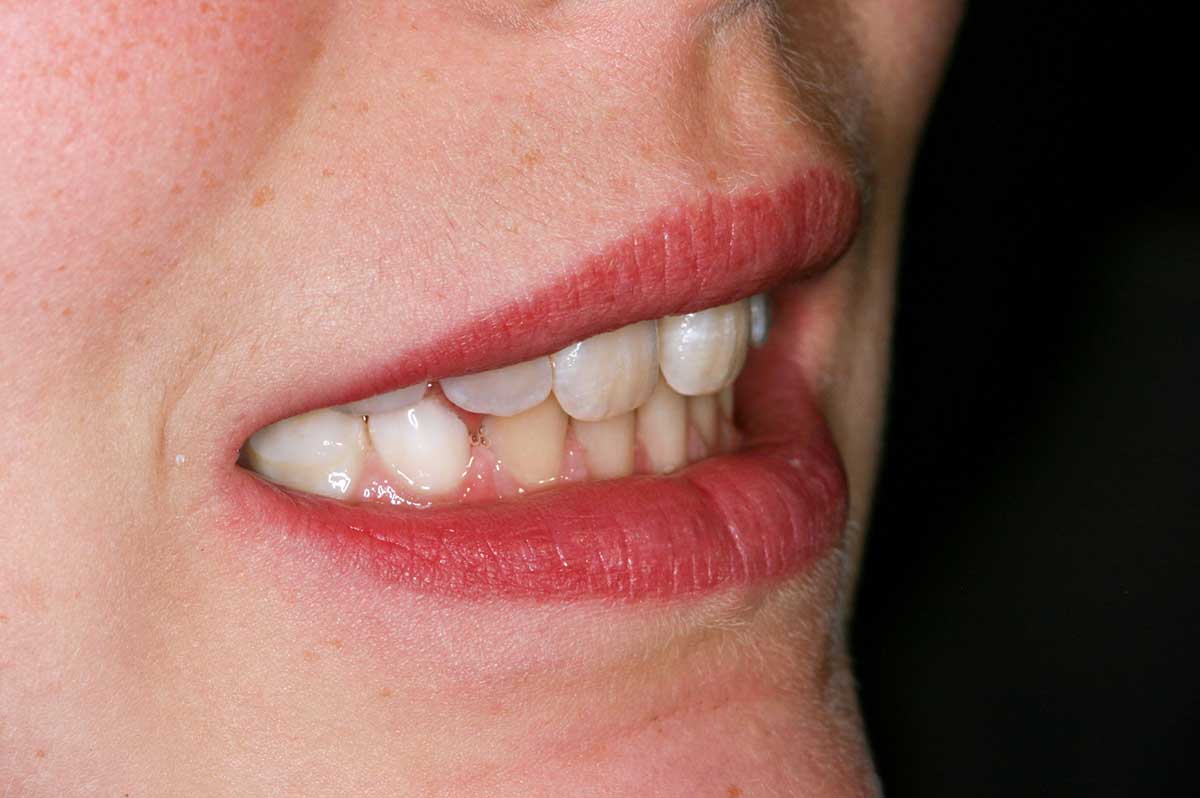
A 5-month recall confirms excellent alignment of incisors.
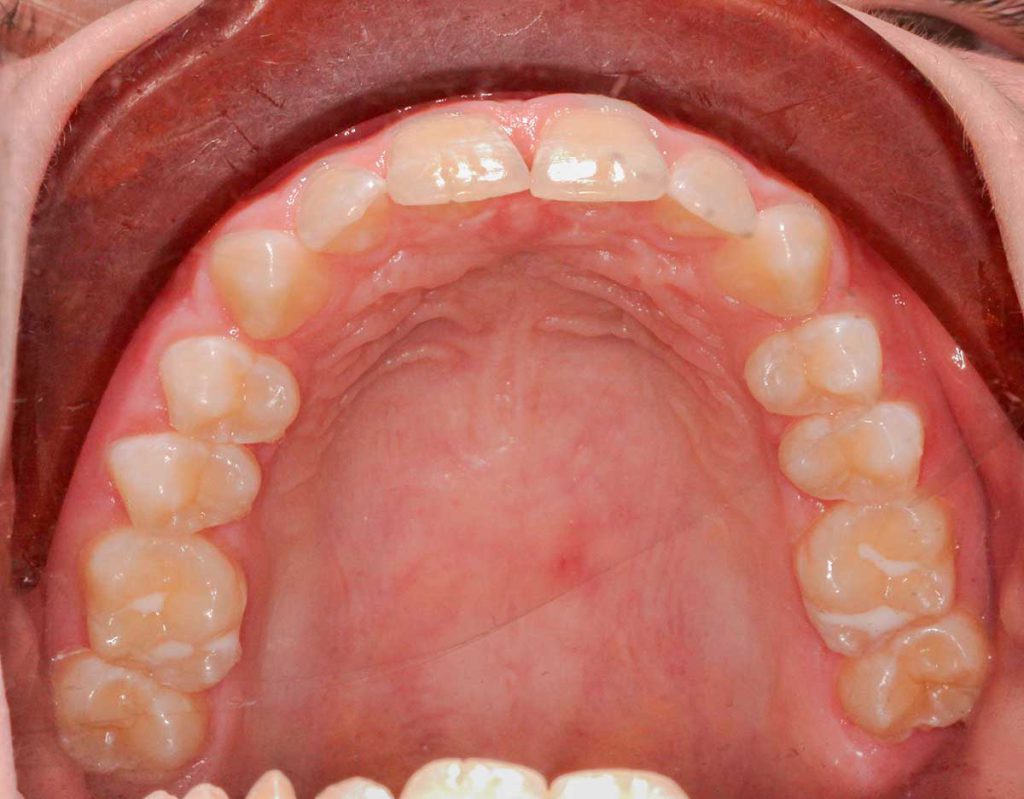
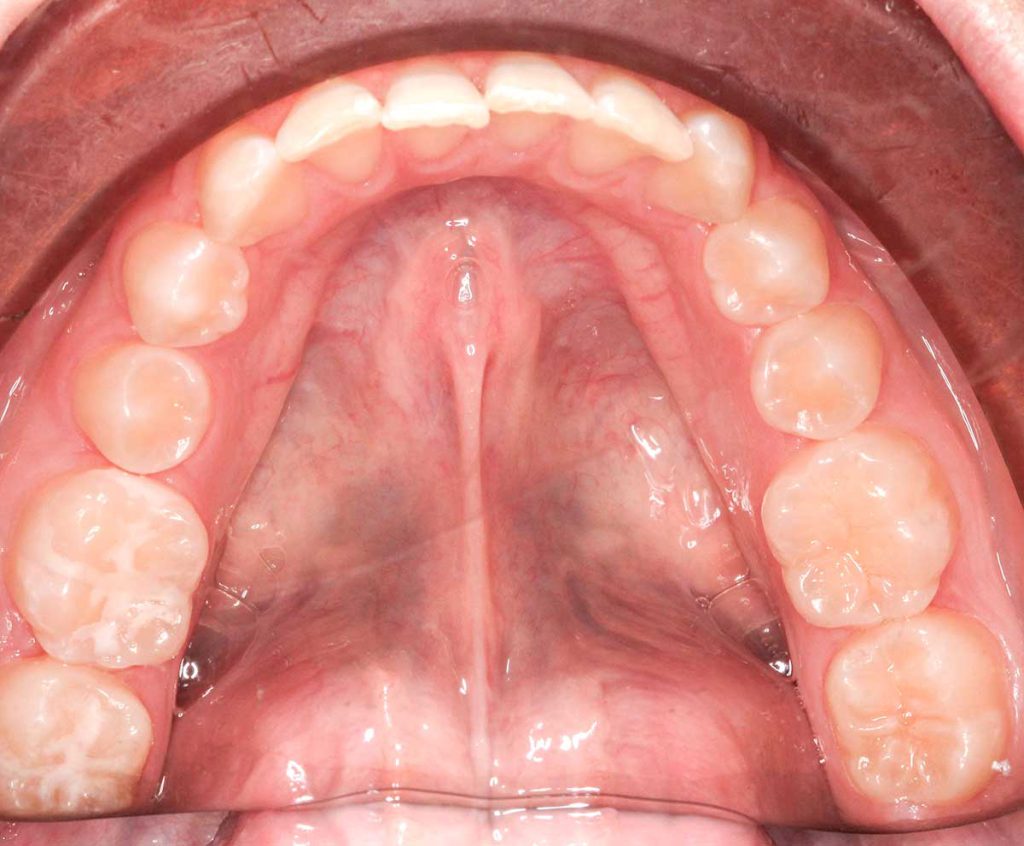
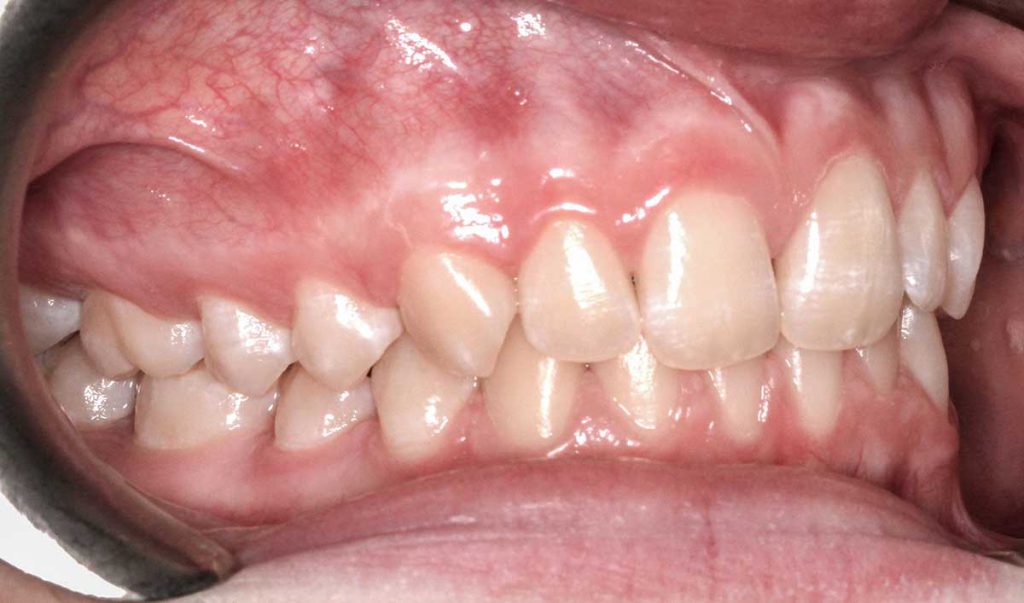
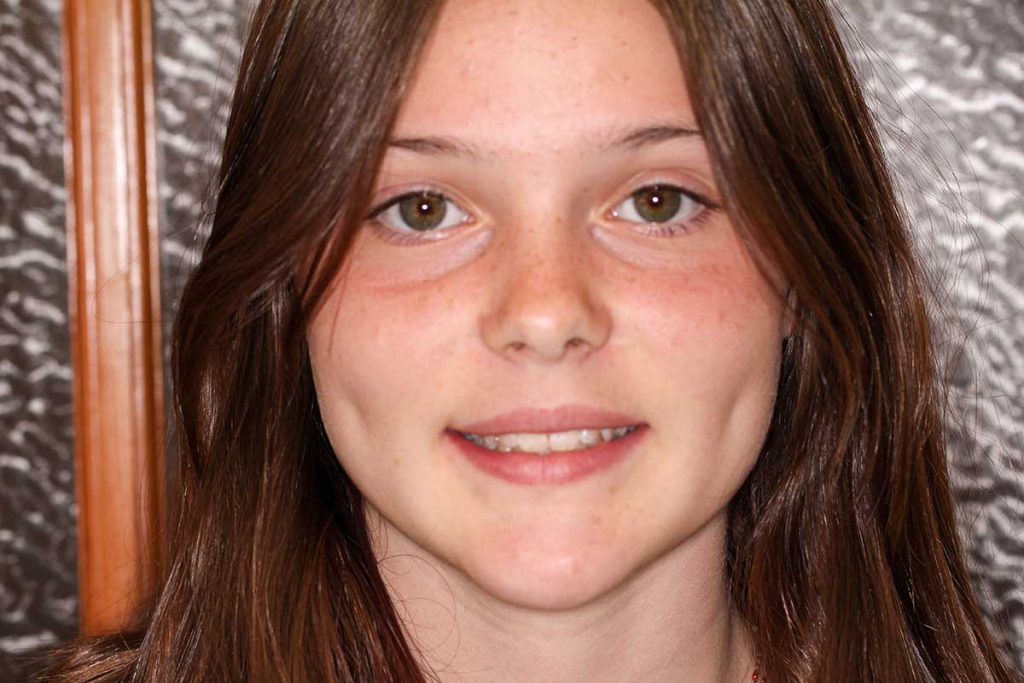
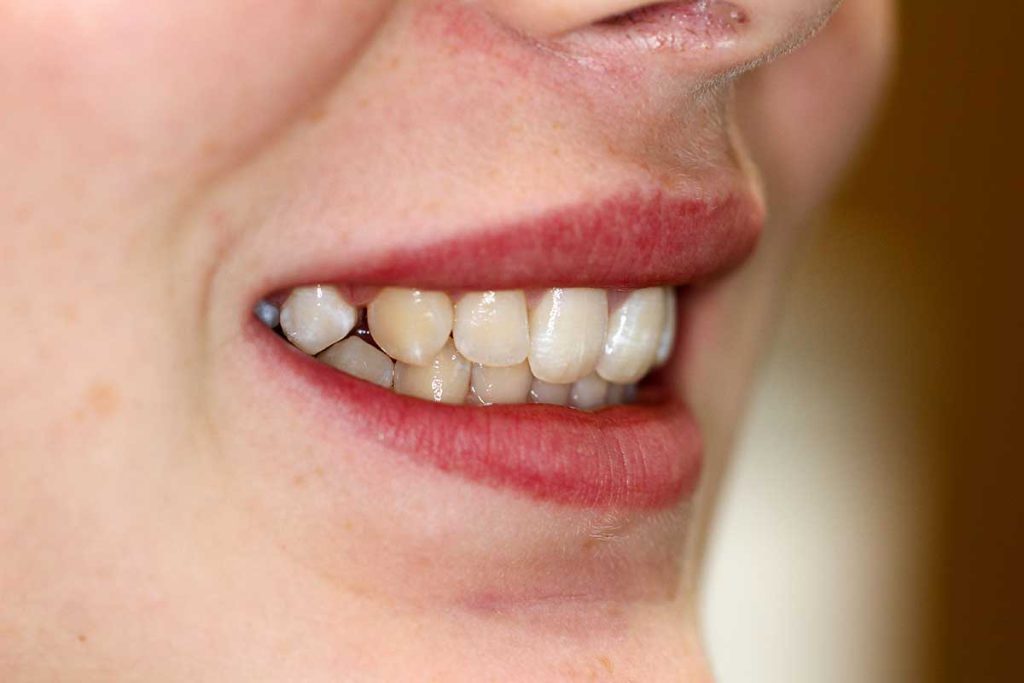
Four years later, the girl is a teen, she has all her adult teeth, and we find the following issues:
- Upper incisors do not have a diastema any more, however, they are flared backward, trapping the lower jaw.
- There are tooth rotations
- The upper and lower arches are slightly constricted.
After consulting with the parent, we decided to start orthodontic therapy and place braces.
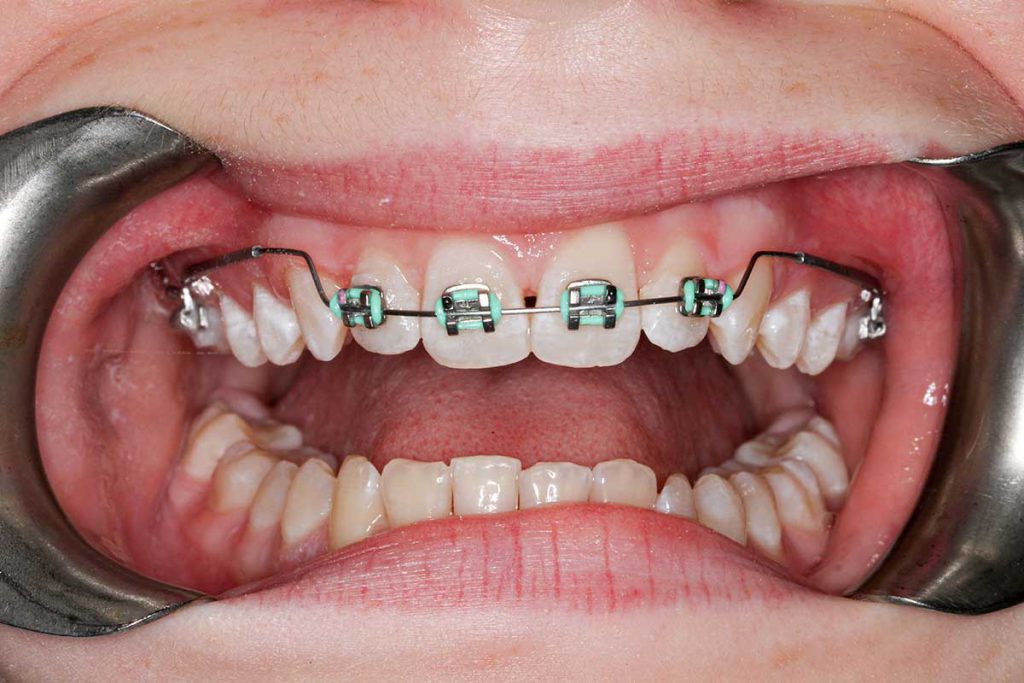
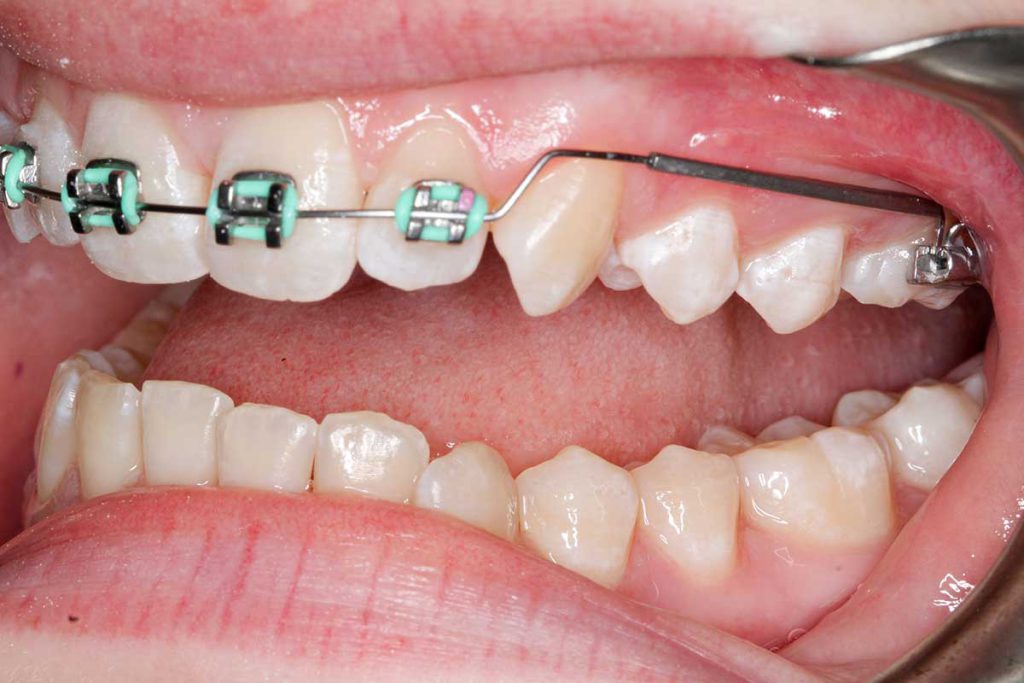
We place brackets on the upper incisors only and anchor a “utility wire” to brackets on the upper molars, to flare the upper incisors. At the same time, we open up the vertical dimension by “tripoding” the bite on a composite ramp behind the incisors, and a buildup on the lower 12-year molars.
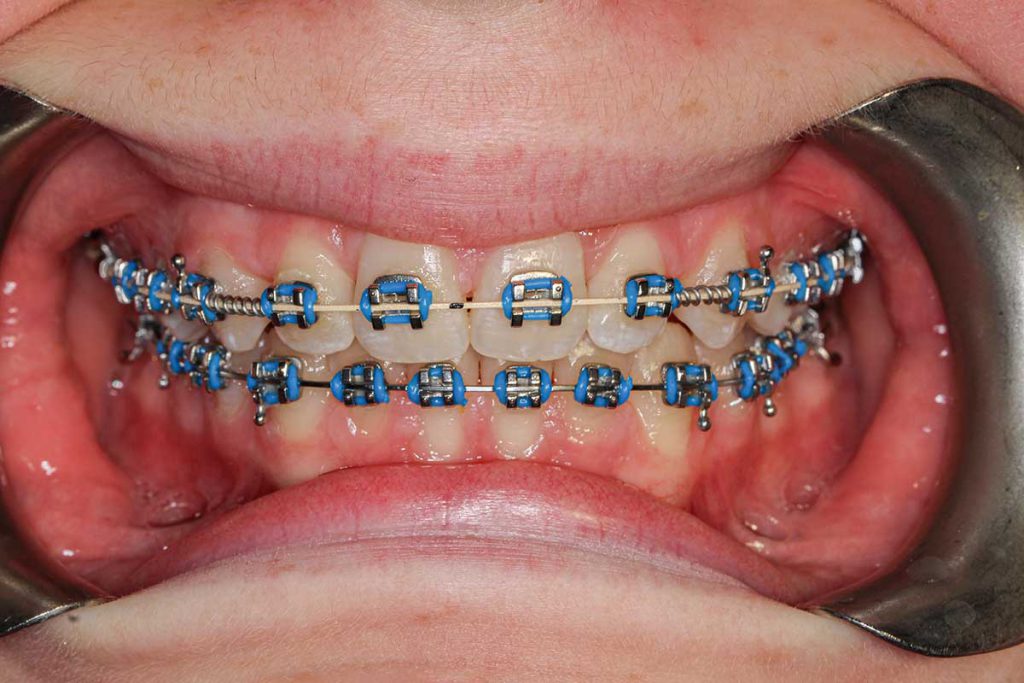
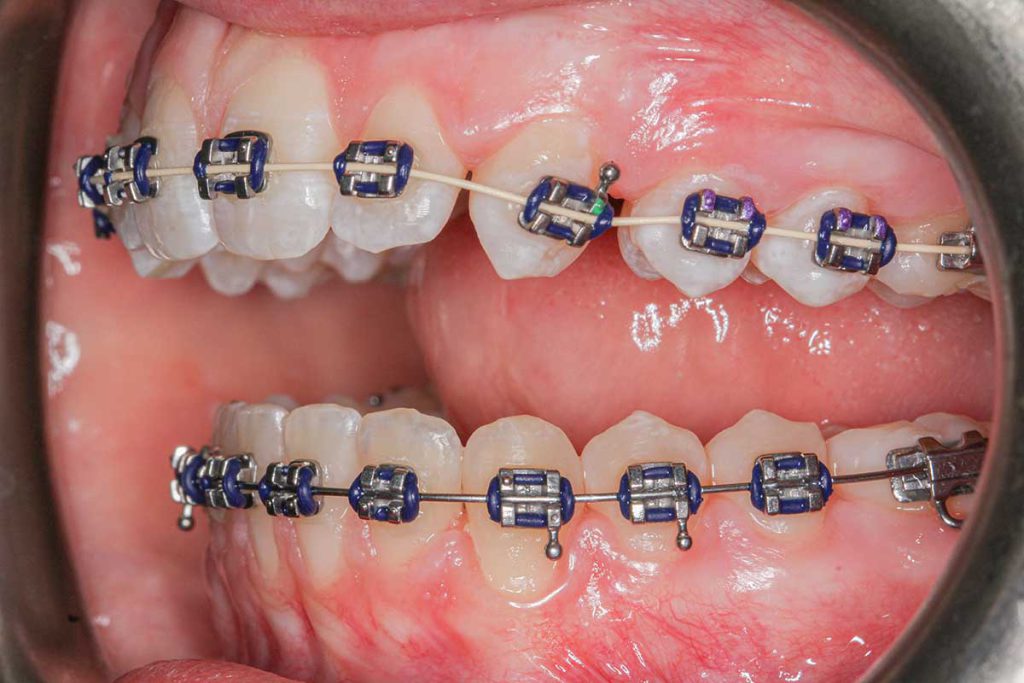
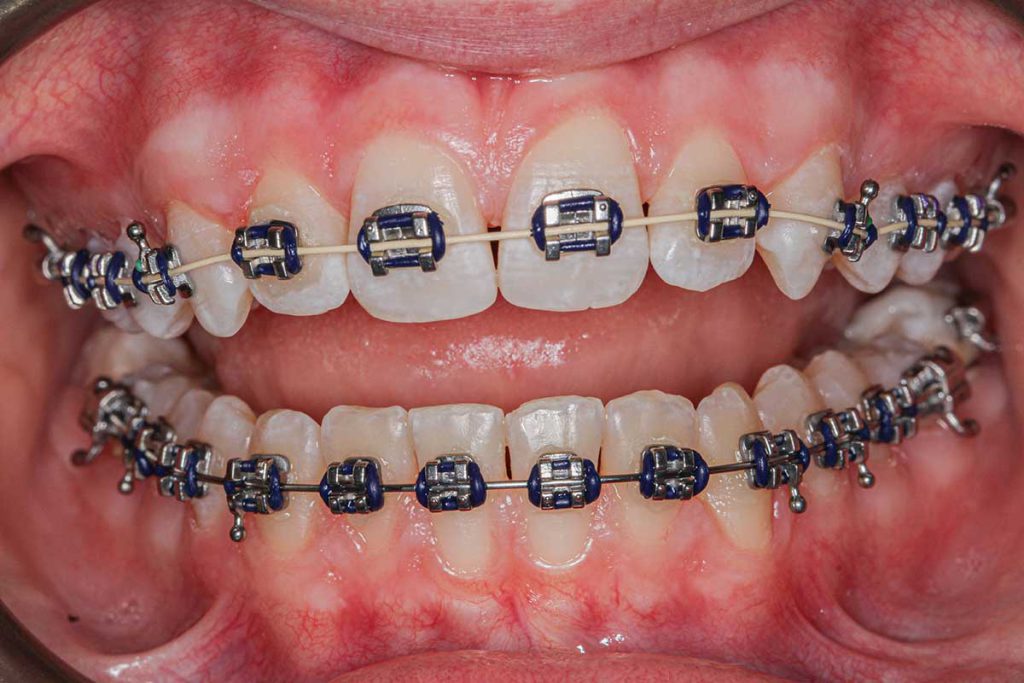
In a few months, full braces are added.
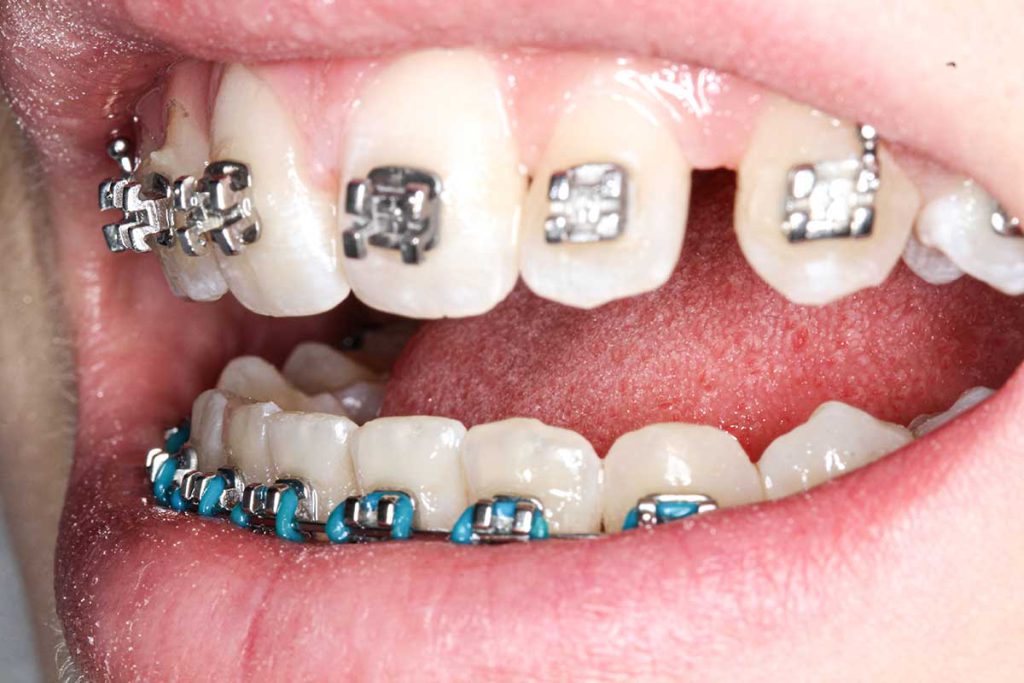
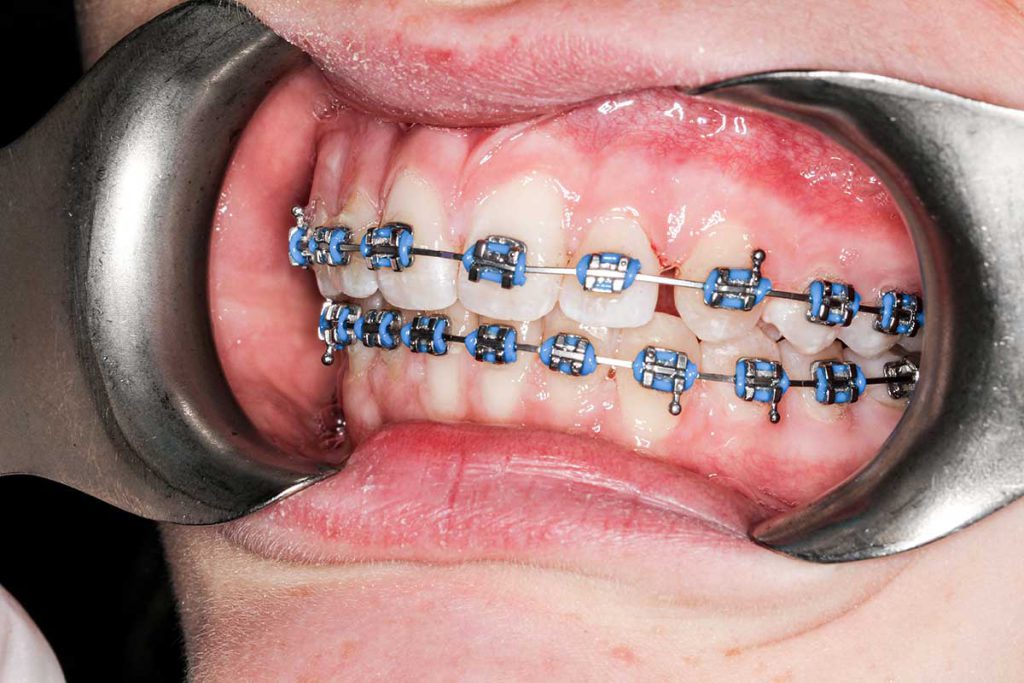
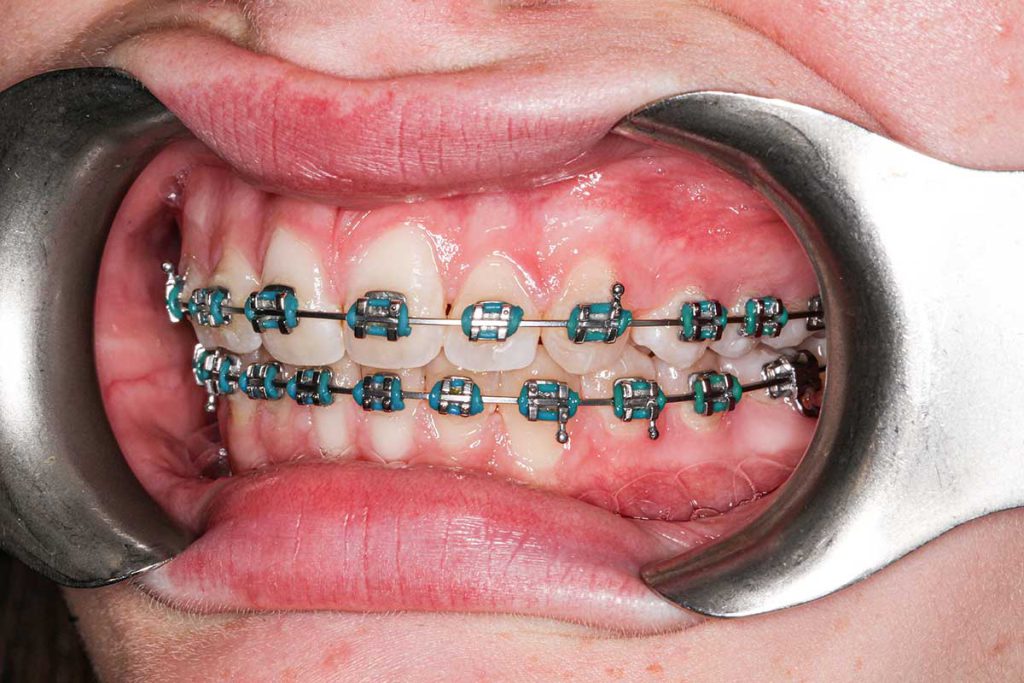
As the front teeth were flared and the arch expands, naturally spaces appear between the upper incisors. I manipulated these spaces so they concentrate behind the upper lateral incisors. These are then bonded to make these teeth wider.
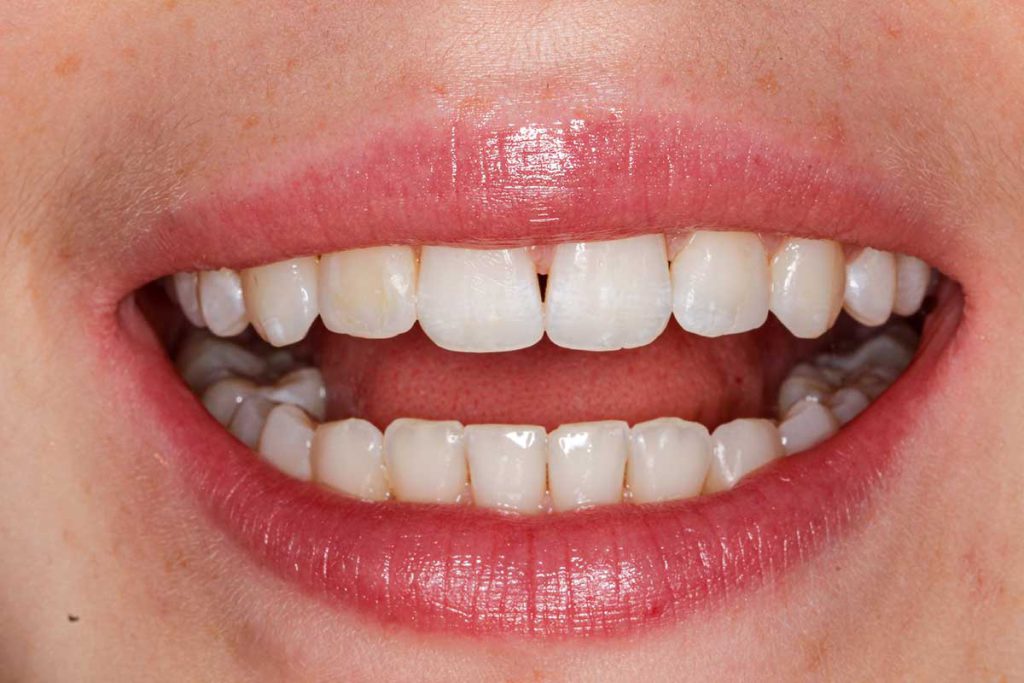
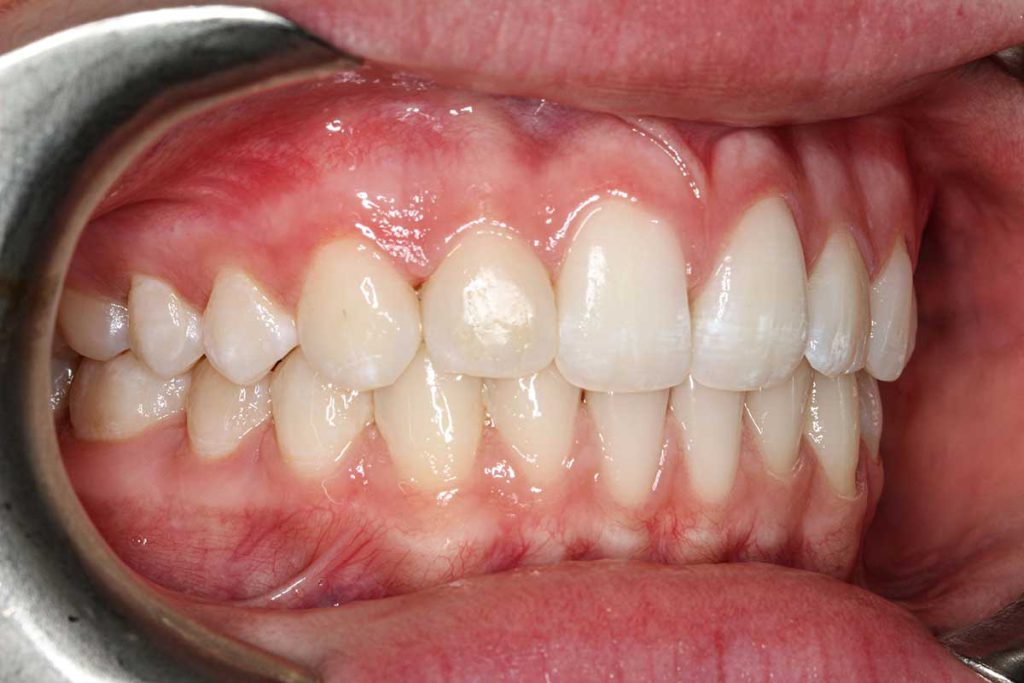
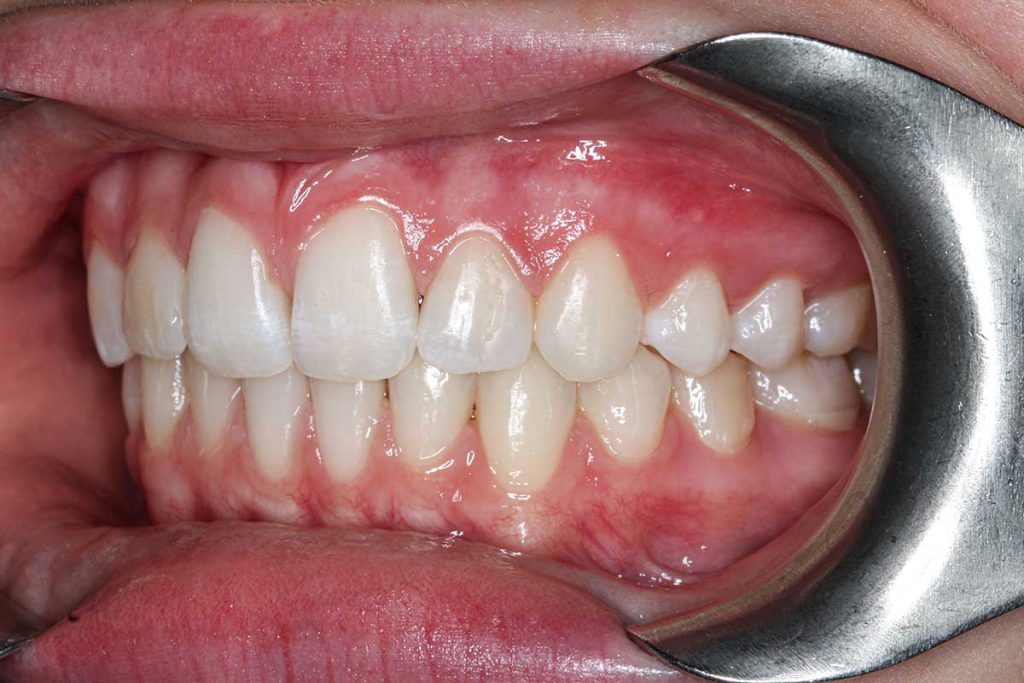
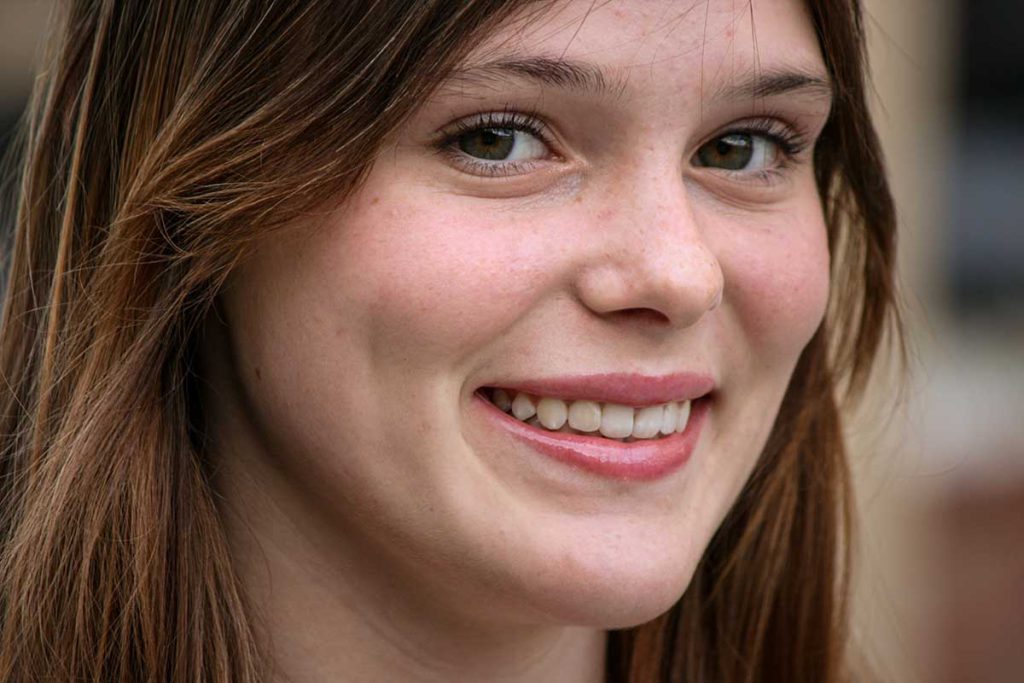
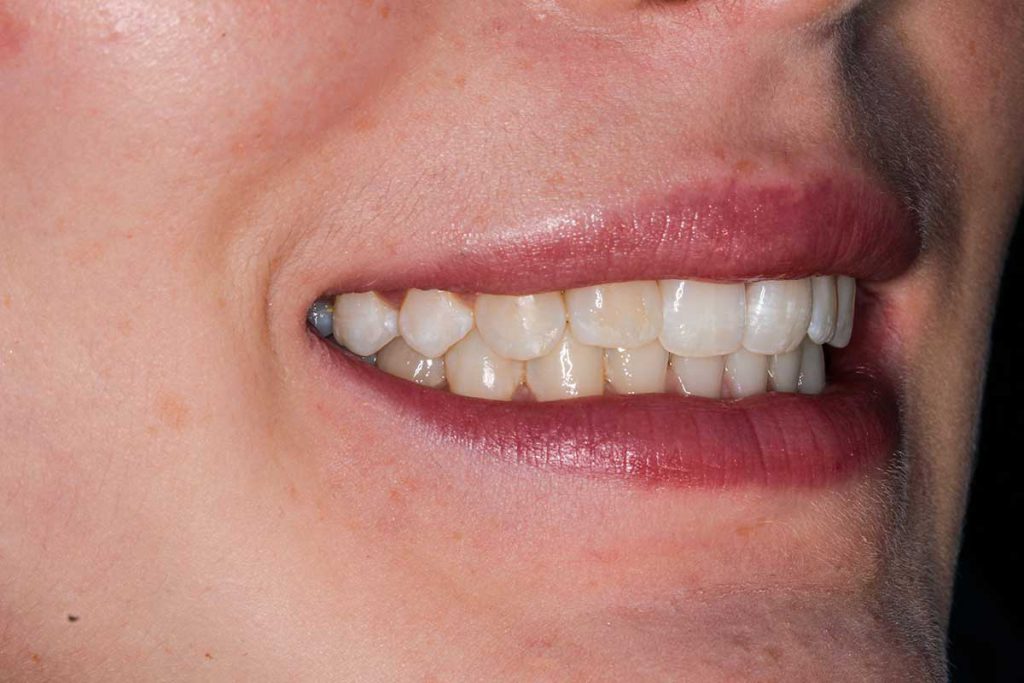
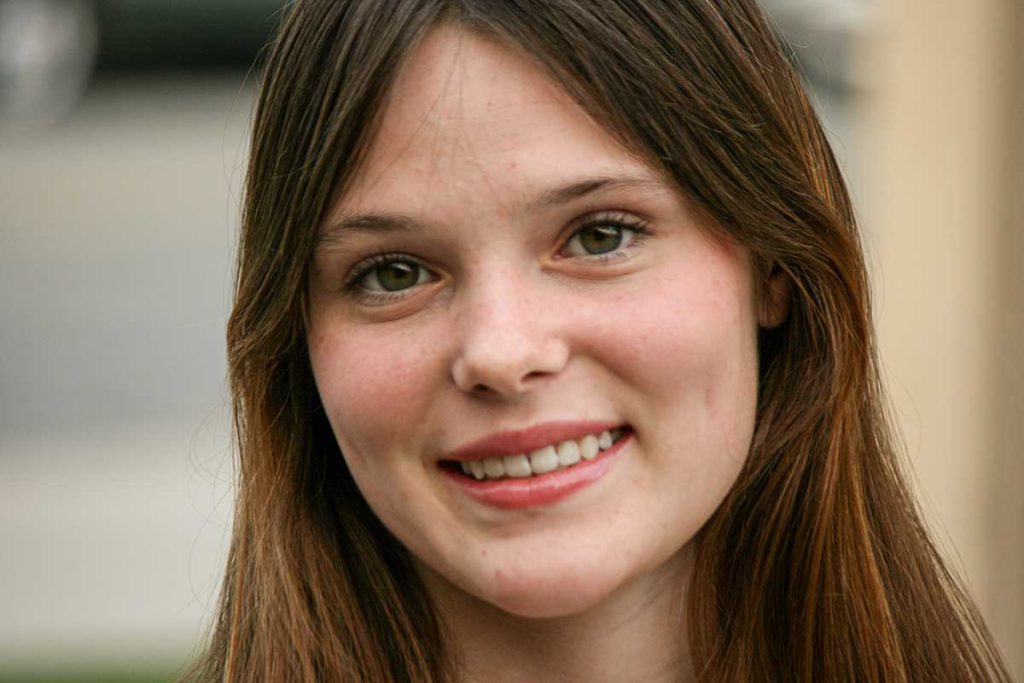

After less than a year, her braces are done and her dental journey is over. She can now brandish a proud and beautiful smile.